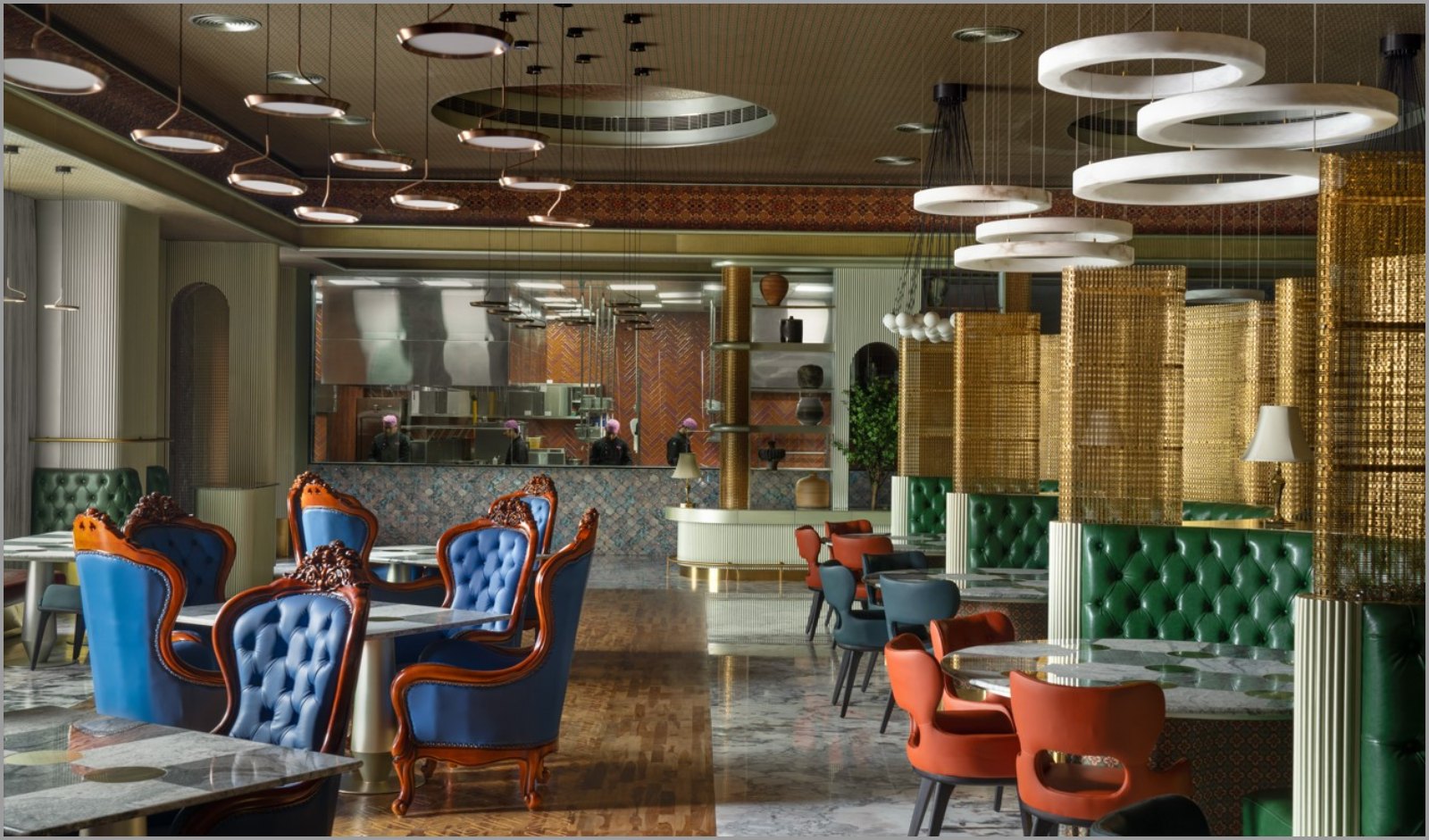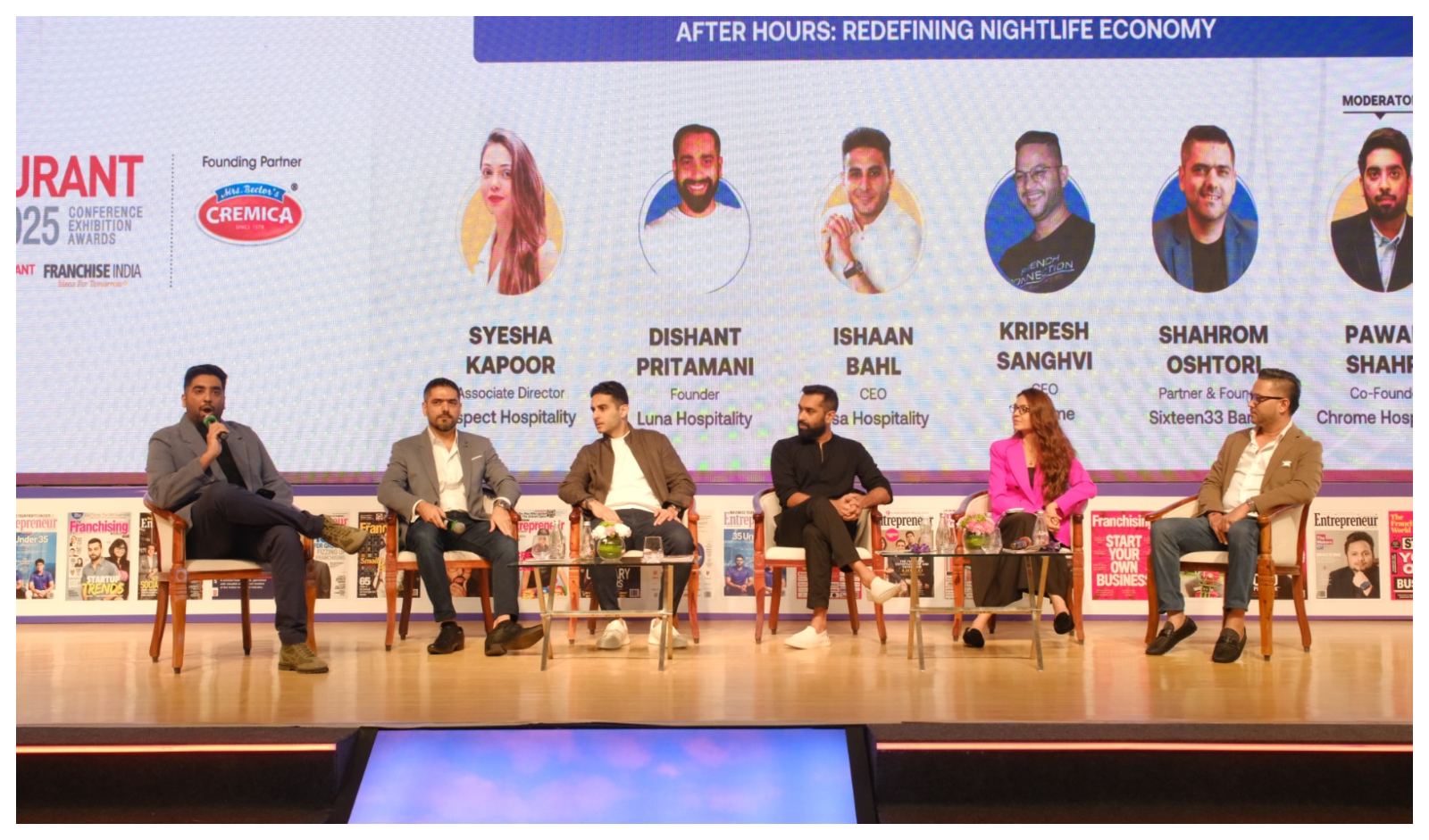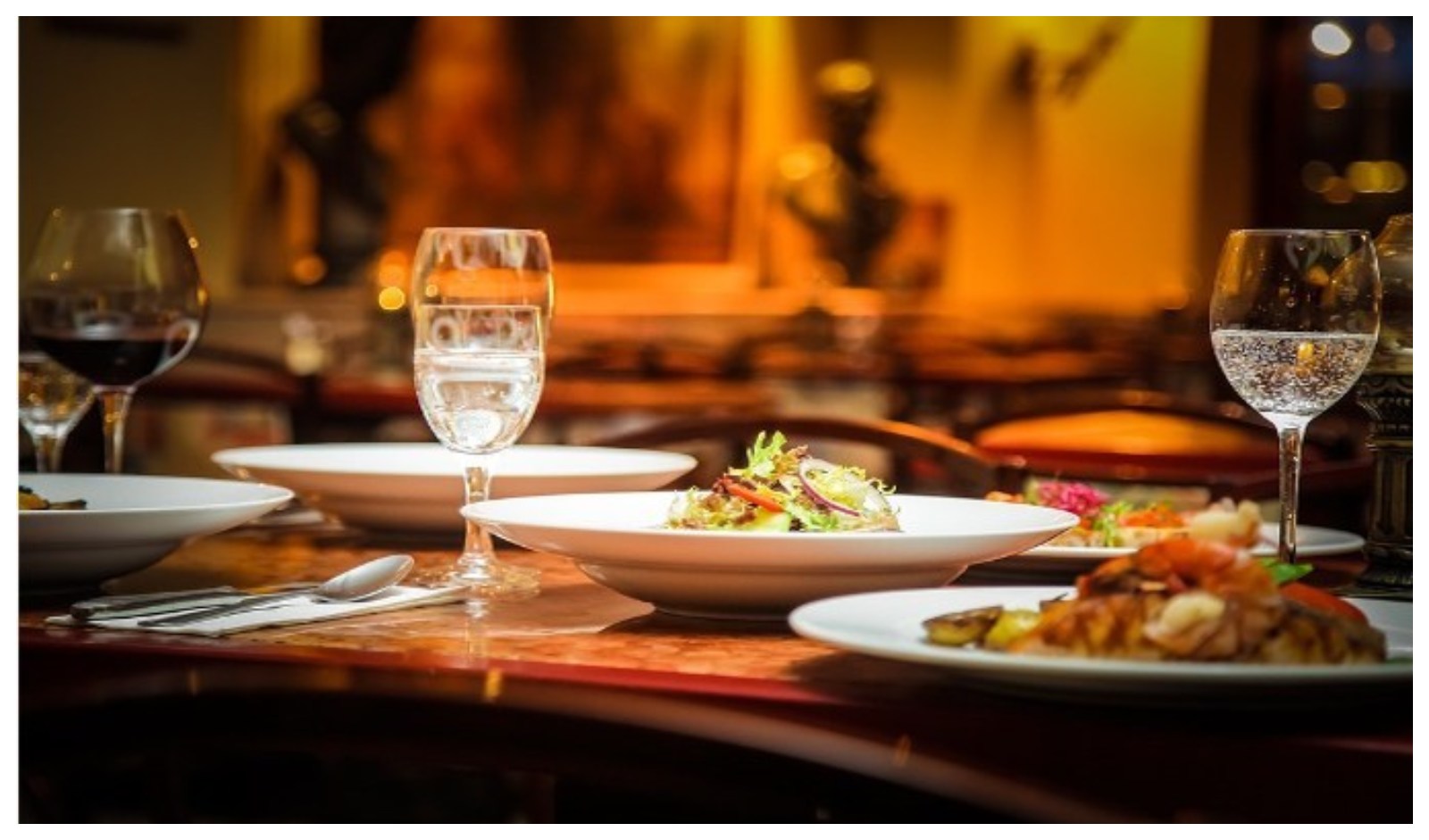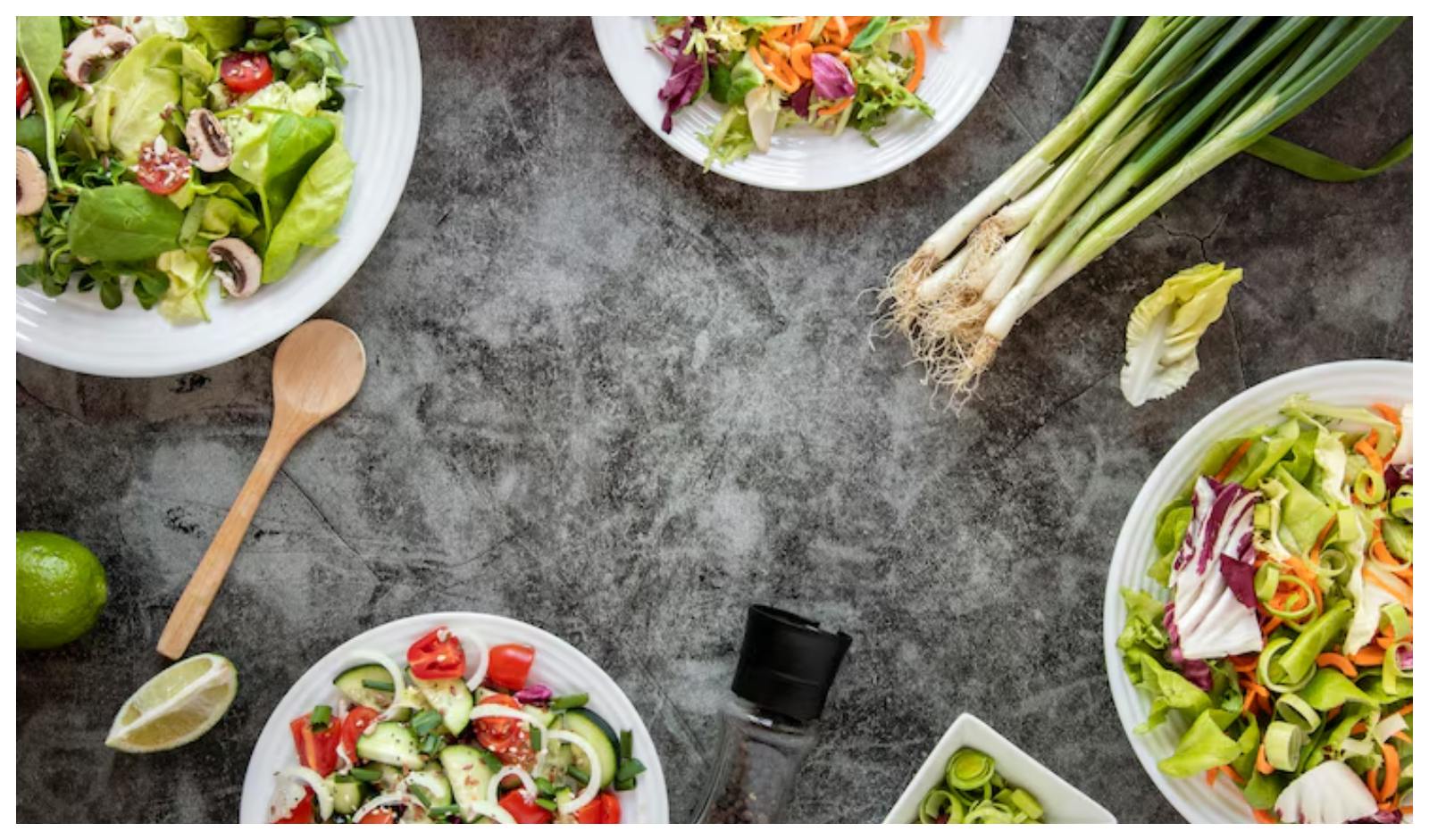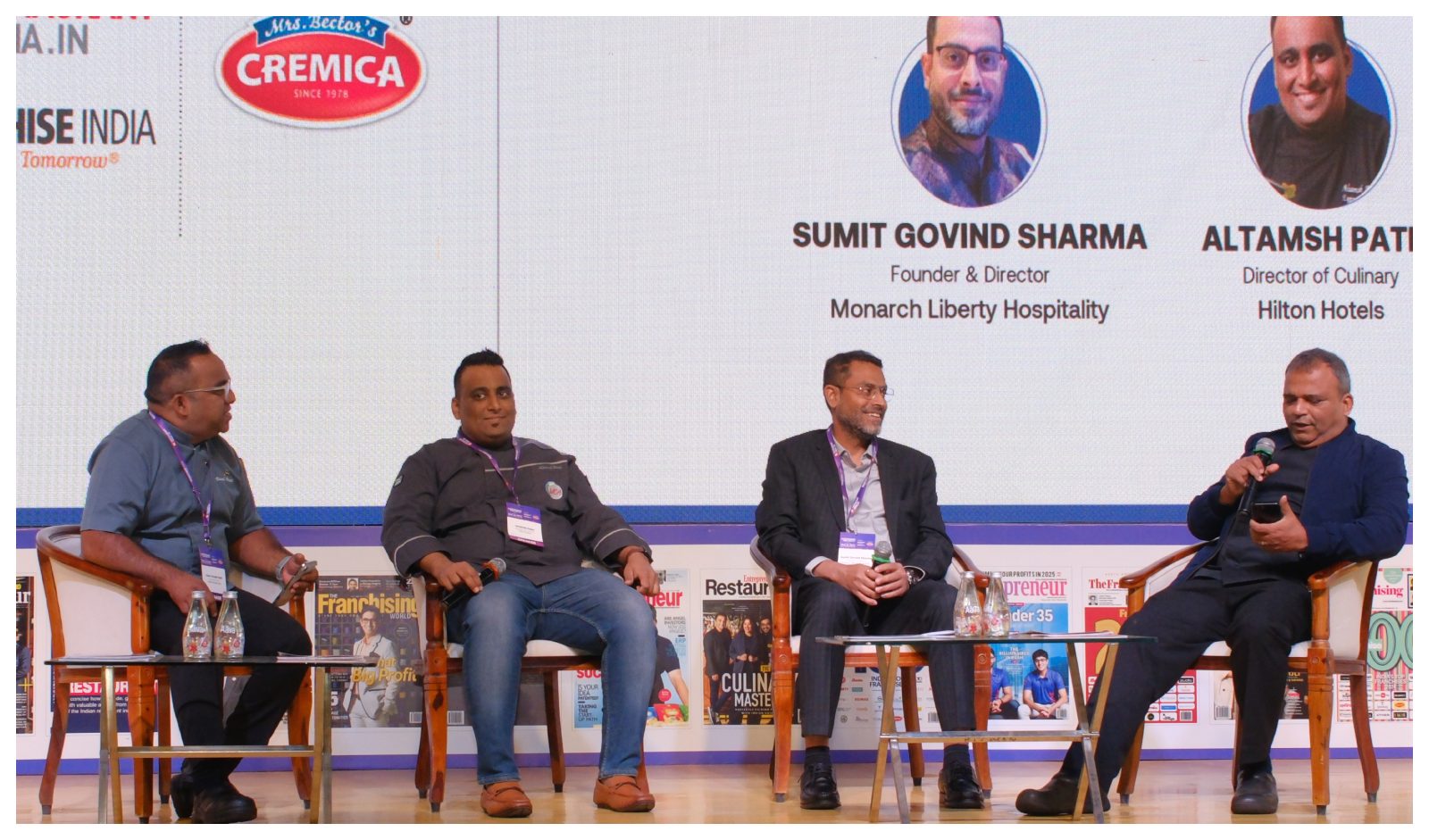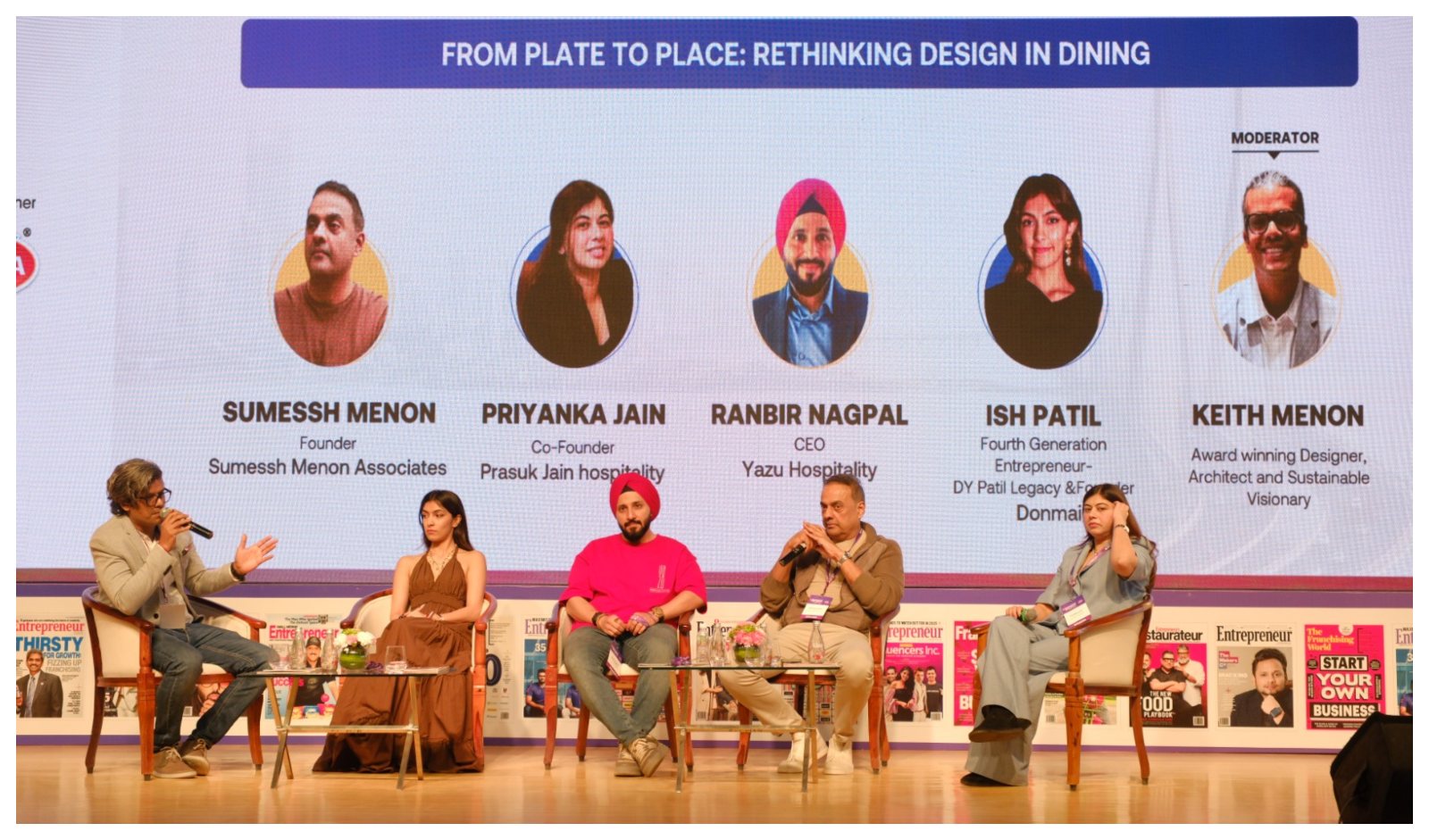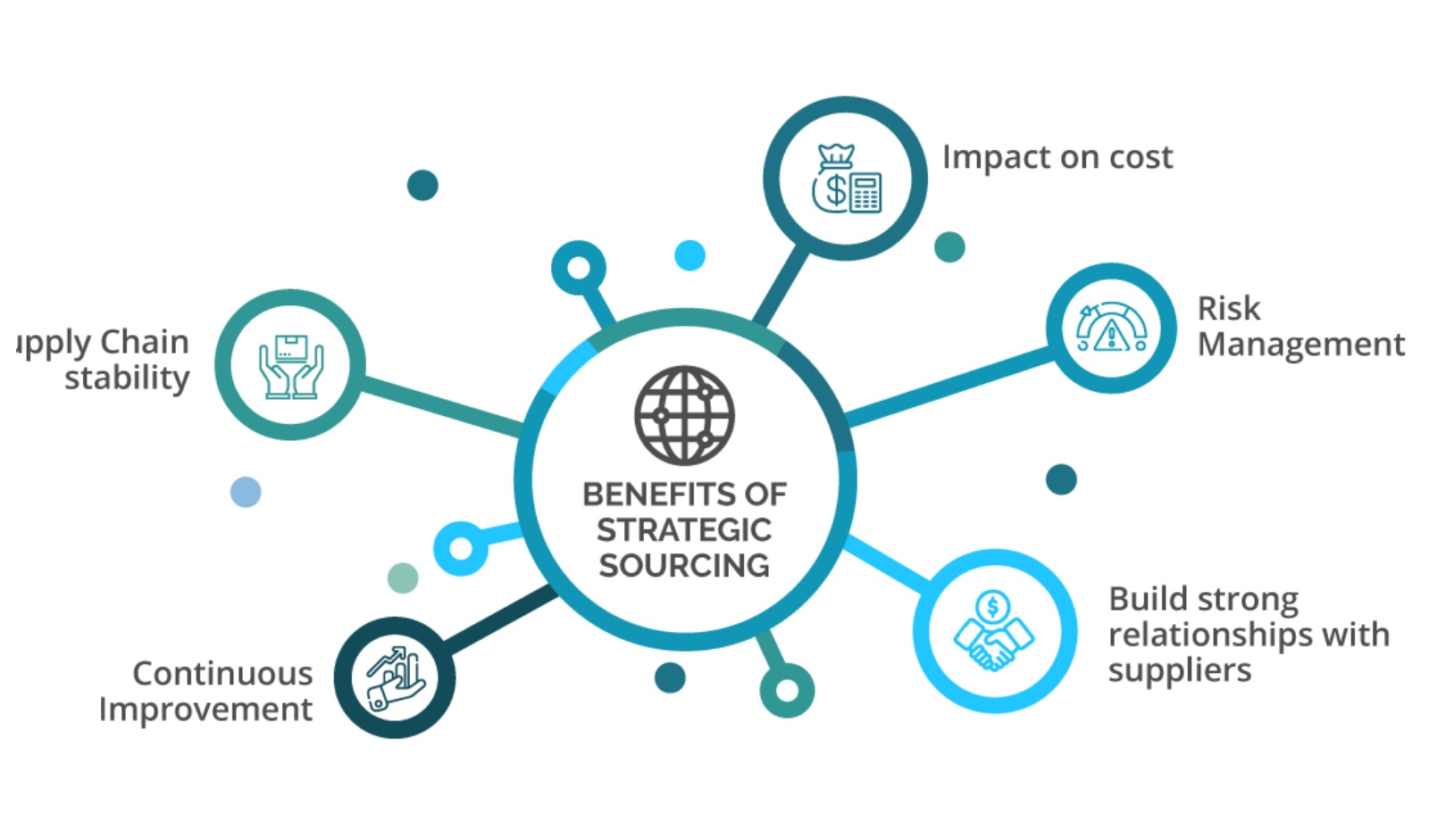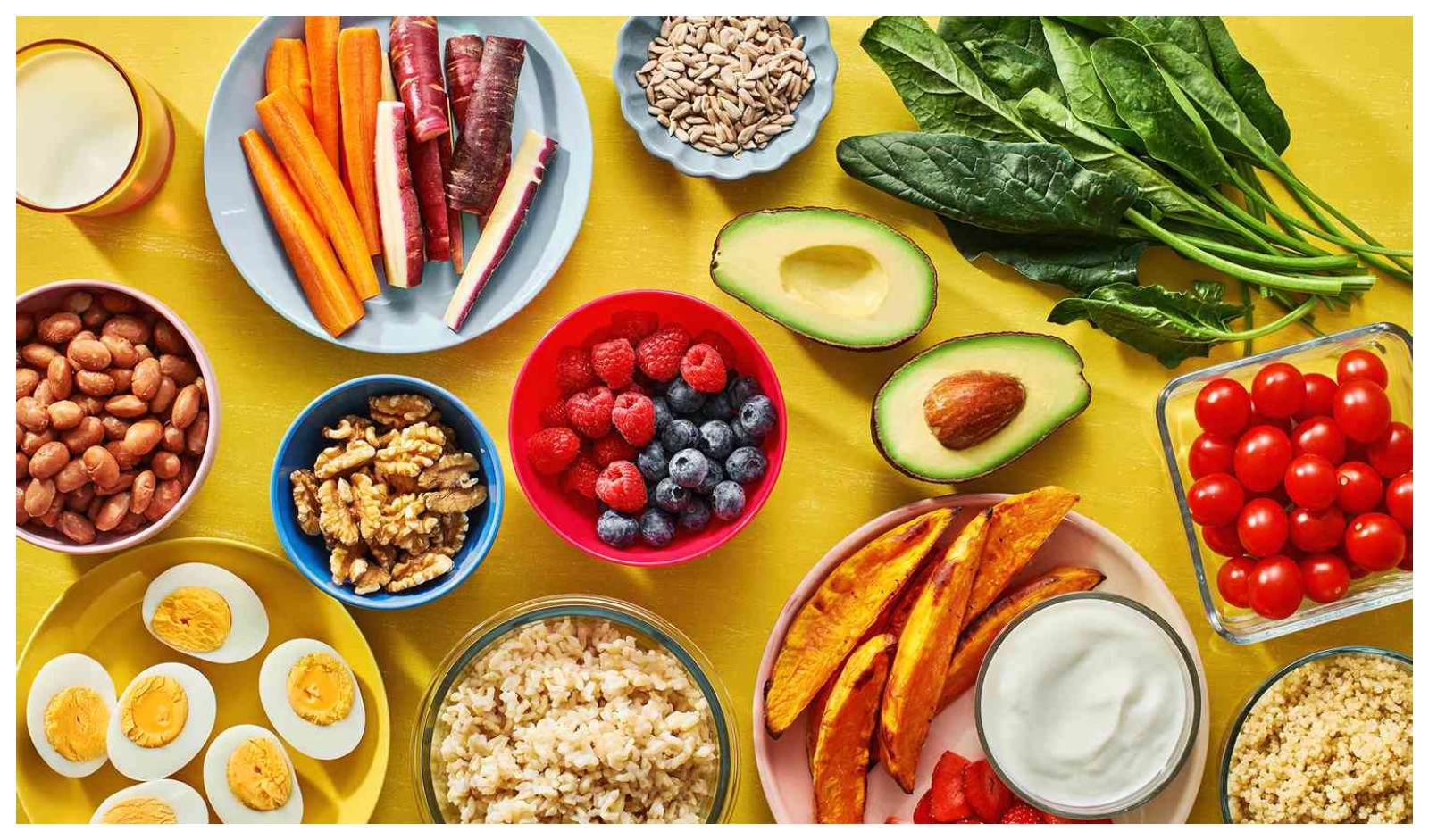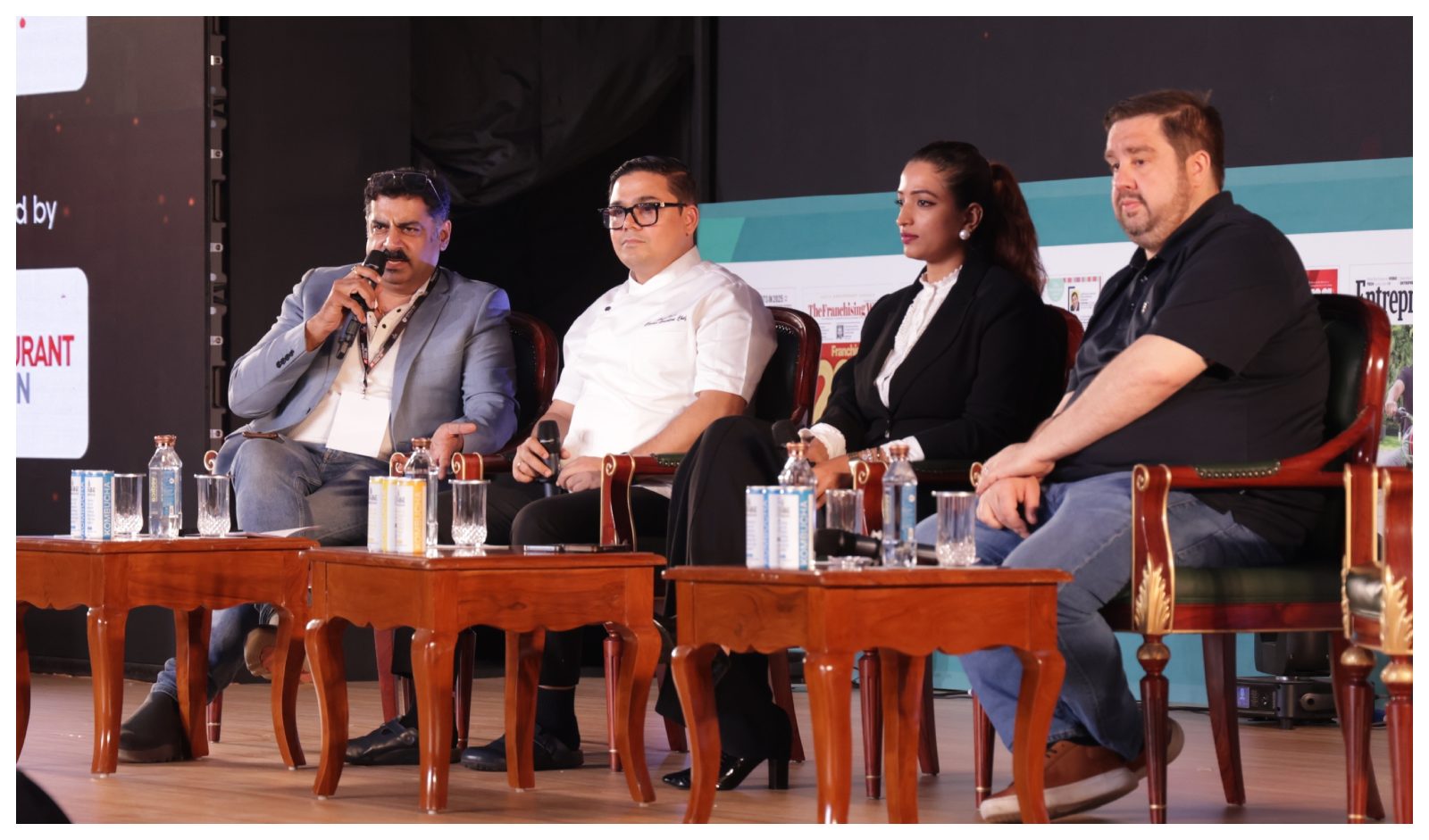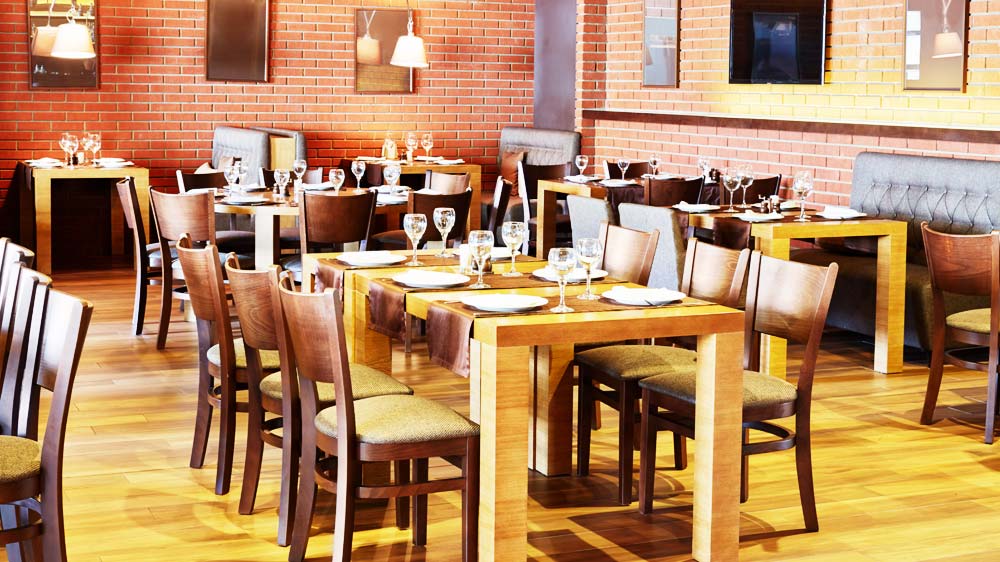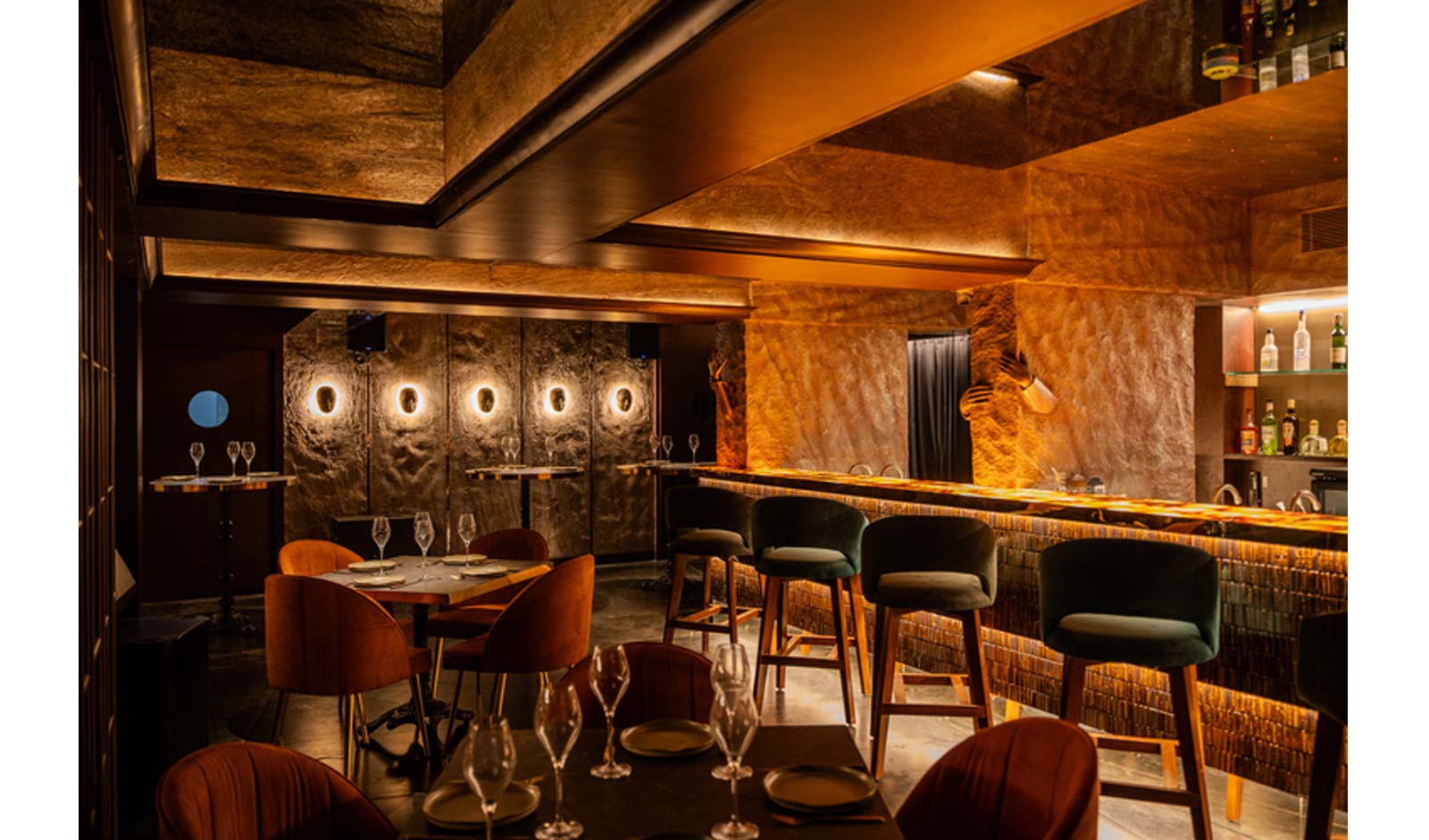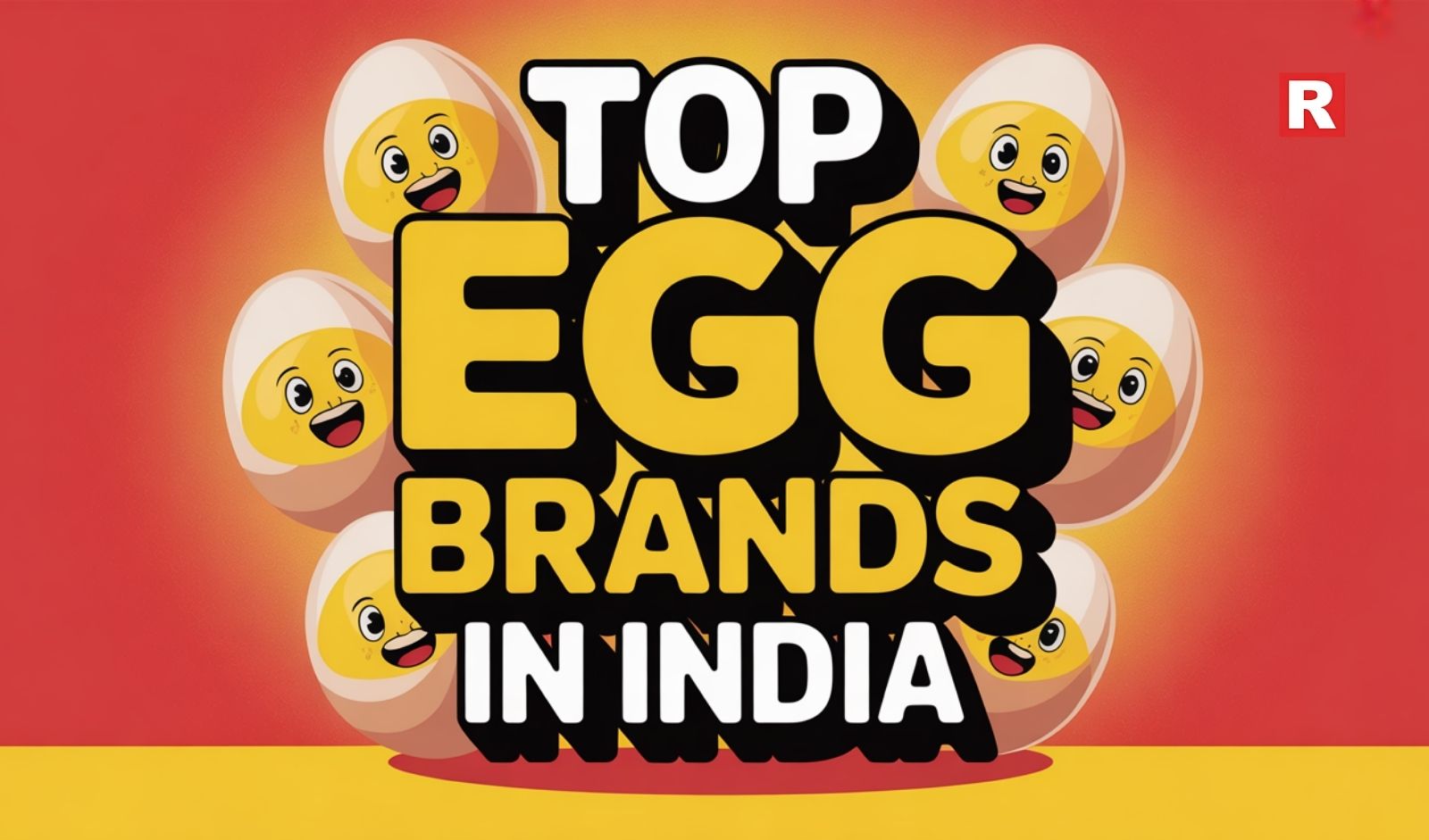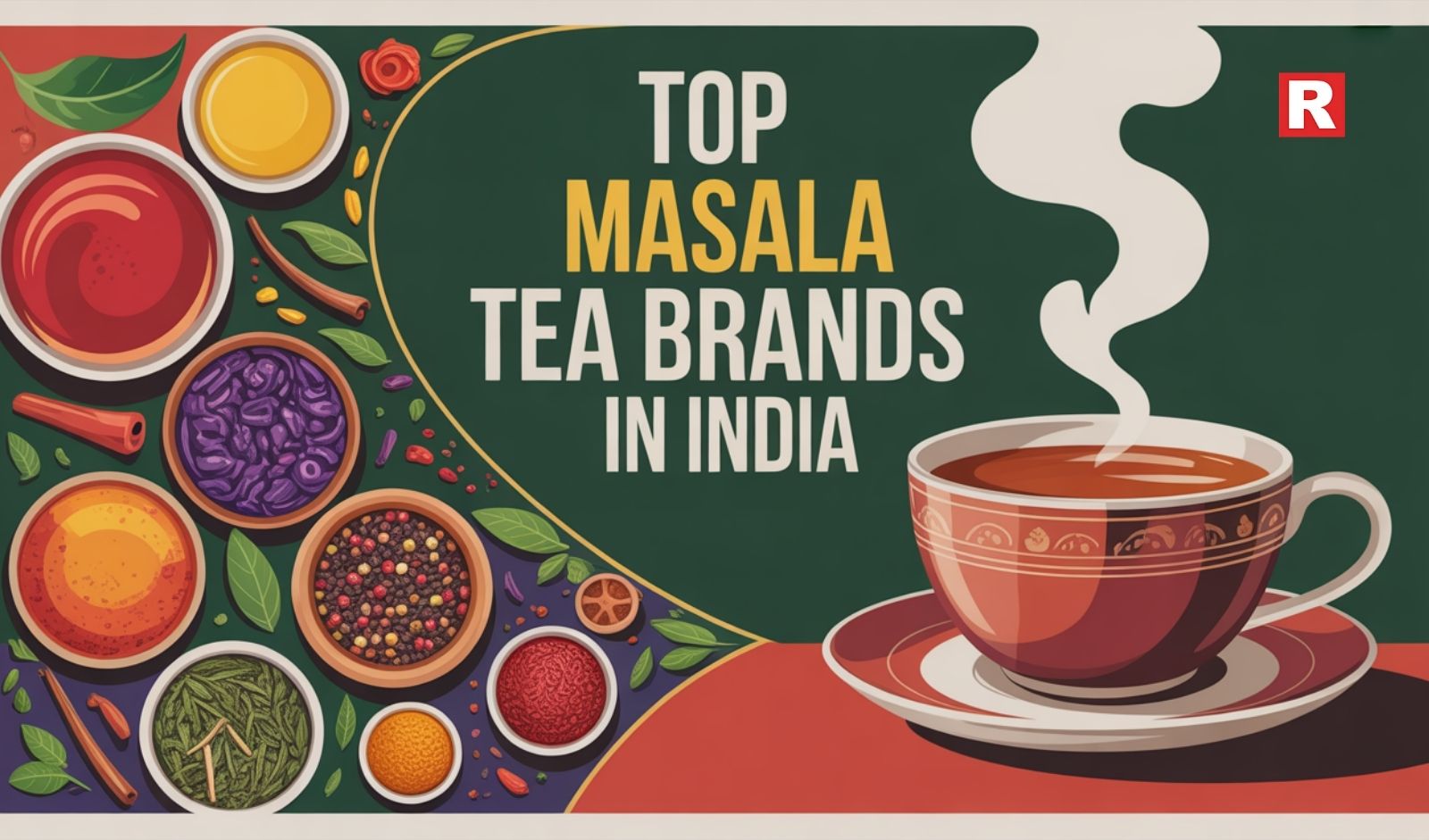
By Raja Sekhar Reddy
In recent years, the Indian Restaurants and Food Services Industry has emerged as one of the fastest developing sectors of the country, witnessing a healthy and generous Y-o-Y growth in incomes. In fact, it has even managed to remain all but unaffected by the adverse impact of the country’s economic slowdown, which has stunted the growth of several other sectors, including automobile, manufacturing, and infrastructure.
Evidentially, the Indian restaurants and food services industry had an impressive market size of Rs 3.7 trillion in 2018, owing to a Y-o-Y growth of close to 10%, and a CAGR growth of 8.4%, between 2013 and 2018. The four major factors that have helped bring about this evolution are:
The emergence of Millennials and Gen X
Millennials and Gen X, have changed the consumption patterns of several industries and like so, the F&B industry as well. With low patience, high energy, and relatively higher income, higher cultural freedom, their spending patterns, behaviour patterns, family contexts and lifestyle has undergone substantial change as compared to the earlier generations. Cutting across SECs, there has been a huge change in the working styles and lifestyles of consumers. For working professionals, the average time spent at work or dealing with work has gone up to almost 12 hours, every day. This kind of lifestyle does not allow people time to cook each of their meals, either, which has changed their consumption patterns, as well. So, millennials who end up spending a major percentage of their earnings on food and beverages expect the experience of the restaurant to be completely out-of-the-box, and more than worth what they are paying for it. These have allowed concept restaurants, and fine dine restaurants to flourish as well.
Emergence of food aggregators
In 2017, India’s online food business industry had a market size of USD 750 million, witnessing a Y-o-Y revenue growth of 150%,during 2016 and 2017, and an incredible CAGR of close to 140% since 2014.However, while these portals have led to the rapid growth of the online food business, it has also had a similar impact on brick-and-mortar restaurants. These aggregators offer customers a plethora of information on a wide and varied range of restaurants, serving diverse cuisines, with unique ambience and décor, while also being priced accordingly. Customers can even read reviews from other individuals and get all the requisite information online, besides being able to book their tables in advance, which has helped enhance their convenience exponentially. In addition to this, these portals also offer businesses an opportunity to promote their establishments further, as well as reach and connect with their customers directly, which is the best way to build goodwill and recall value.
Market expansion in Tier 2 and Tier 3 cities
The growth in disposable income, in recent years, has not only transformed customers in metro cities, but also Tier 2 and Tier 3 cities, leading to a rise in aspirational demandsfrom the segment. Unlike earlier, customers from these cities are growing increasingly eager to indulge in unique experiences, leveraging their increased purchasing power. However, owing to previous trends, such cities continue to have few establishments which cater to their needs. This has presented an incredible opportunityfor major players to leverage the gap in the industry, to expand their presence and tap into this huge market. This has also played a key role in creating increased job opportunities, and providing employment to a large section of people in such cities. This will help drive the growth of the economy, and further create increased opportunities for the residents, as well as other businesses, in the years to come.
Willingness to experiment
Over the past decade, Indian customers have been increasingly eager to experiment with their palates and try new and exciting specialties from all corners of the world, be it an authentic Japanese Sushi, Mexican Enchiladas, or more. This has helped bring about a burst of innovation that is constantly driving businesses to redefine their offerings with new and exciting elements, inspired by world cuisines, cultures, and more. The direct result of this phenomenon has been the birth of a number of experimental concepts and offerings, such as fusion food, authentic country-specific delicacies, molecular gastronomy, and seasonal and festival-specific pop-ups, among others.
In the years to come, the Indian restaurant and food service industry is only expected to grow further, with the CARE Ratings projecting a growth of nearly 10.4% CAGR, during the period of 2018 and 2022, to help it reach a market size of Rs 5.5 trillion.
The author is a Founder of SquareMeal Foods

Indian hospitality has always been shaped by continuity. Recipes travelled from one generation of chefs to the next. Hotel cultures formed their own internal traditions. Restaurants carried the signature touches that loyal guests came back for year after year. For a long time, this continuity was not only comforting, but it was also commercially sound.
But over the last decade, a quiet shift has been taking place. India’s diners and travelers are seeking more than familiarity. They’re choosing dining rooms with a point of view, smaller menus built on clarity, boutique hotels with intentional storytelling, and experiences that feel thoughtfully stitched together rather than broadly designed for everyone.
As these expectations evolve, a new generation of hospitality leaders, many stepping into family-run restaurants or hotels, others returning from global exposure, some entering the industry for the first time, find themselves at an interesting intersection: How do you honour what came before you, while shaping what must come next?
Listening before changing research as the new foundation
Before this generation rewrites anything, many of them are doing something that traditional hospitality often skipped: they’re listening to the data.
Consumer reports and global F&B trend studies show a clear pattern:
● Guests are choosing experiences that reflect identity, not just convenience.
● Discovery happens online, through visual storytelling, reviews, and cultural cues.
● Loyalty is shifting from favourite dishes to favourite feelings
In my own early experiences advising and working within hospitality teams, looking at this data alongside feedback forms, reviews, and repeat-visit patterns provided clarity. It helped separate what guests still value from what they’ve quietly outgrown. Research doesn’t replace instinct. It simply refines it.
Gently challenging the inherited rules
Every long-standing restaurant or hotel operates with a set of internal truths. Not because someone wrote them down, but because they were passed along unquestioned. The new wave is not discarding these beliefs but they’re examining them with fresh eyes. Across operations, certain shifts are becoming common:
Menus with a viewpoint: Instead of large, “safe” menus, many younger teams are designing tighter, concept-led menus that reflect a culinary identity guests can understand and remember.
Systems over dependence: Legacy businesses often relied on strong individuals. Today, documentation of recipes, beverage manuals, prep flows, service rituals, etc. is becoming essential infrastructure.
Culture as a brand pillar: Instead of associating discipline with fear, leaders are adopting coaching styles, structured training, and clear growth pathways.
Leadership is shifting from authority to authorship
One of the biggest lessons many next-generation leaders encounter early is that hospitality cannot rely solely on hierarchy anymore. The modern workforce is younger, more aspirational, and more sensitive to burnout. This is pushing leaders toward:
-collaborative kitchen tastings
-sharing context during menu development
-consistent training instead of reactive correction
-involving junior team members in decisions that affect them
The outcome is not just happier teams; it’s more consistent guest experiences. When staff feel ownership, they deliver with intention.
Experience has become the real differentiator
Whether we’re talking about a restaurant or a boutique hotel, the offering today is no longer defined by one element. Guests experience the whole ecosystem:
● How the brand looks online
● The welcome moment
● The coherence between kitchen, bar, and design
● The narrative behind flavours, textures, or spatial choices
● The emotional tone the space carries
Ambience, beverage programs, tableware, scent, lighting, and pacing are no longer considered “extras.” They are part of the product itself.
Reinvention with respect: choosing what to carry forward
Most next-generation leaders entering hospitality today aren’t trying to distance themselves from tradition. If anything, they’re deeply aware of its value, its craft, its stability, its stories. The strongest brands emerging right now are the ones that:
● Honour the legacy that anchors them
● Refine practices that no longer serve the guest or the team
● Articulate a clear identity that resonates with today’s India
● Innovate without severing the lineage that gives them meaning
A thoughtful handover between what was built, and what must now evolve. And in that handover lies the blueprint for where Indian hospitality is headed grounded in its past, but unafraid to shape its future.

India’s nightlife ecosystem is in the midst of one of its most dynamic transitions. What was once a predictable mix of bar menus, mainstream music, and standardized design has transformed into a sophisticated, hyper-experiential economy driven by evolved consumers, cultural exploration and a new generation of operators redefining what it means to “go out.”
From Mumbai to Goa and beyond, hospitality entrepreneurs are reimagining bars as sensory worlds, community hubs, culinary destinations, and experimental labs each with a distinct identity. This transformation is not just reshaping how India drinks; it’s reshaping how India socializes, connects and celebrates culture. As per the reports, India sees a huge untapped potential, with projections suggesting a market value of around $4.64 billion by 2030.
The Consumer Shift
Today’s nightlife consumer is no longer passive. They are informed, opinionated, and deeply aware of what they want. Syesha Kapoor, Associate Director, Aspect Hospitality is clear about this evolution. “Everyone is going out, but they want intimacy, community, and uniqueness. Consumers have evolved and they know exactly what they want.”
Consumers are Well-travelled, comparing experiences to global cities. They are detail-oriented, noticing lighting, ambience, storytelling and menu design. They are focusing on experience-driven and like choosing places that go beyond food and drink
Captivating New Pockets: Localization as Strategy
When Ishaan Bahl, CEO, Risa Hospitality launched 145 a decade ago, the market was very different. Like freak shakes, for instance was a wild experiment yet they sold 5,000 in the first month. But the real learning came later. “Consumers today are incredibly experienced driven. They’re well-travelled. They notice the small things interiors, lighting, music, ambiance,” he explained.
As 145 expanded, one truth became clear: there is no single Mumbai market. South Bombay wants elegance, heritage and nostalgia. While Andheri wants energy, youthfulness and movement.
Menus, music, and even service styles had to be localized. “Understanding your audience is everything. That defines brand success.”
A New Movement: The Vegetarian Bar
The idea of a fully vegetarian bar would have been unimaginable a decade ago. But today, it’s part of India’s cultural and culinary confidence.
Kripesh Sanghvi, CEO, Epitome is at the forefront of this shift. “Earlier, people thought alcohol must be paired with non-veg. That’s changed. Vegetarian cuisine today offers depth, creativity, and premium experiences.”
By offering high-end, fully vegetarian menus, he taps into growing vegetarian demographic, cultural reinvention of Indian ingredients and a desire for immersive, guilt-free, flavour-forward dining. His vision is clear: vegetarian bars are not a niche as they are an emerging category.
Designing Experiences: From First Step to Final Goodbye
In the new nightlife economy, the product is the experience, not just the drink.
Dishant Pritamani, Founder, Luna Hospitality built his brand around this philosophy. “From the moment you walk in to the minute you leave, you’re paying for everything. I don’t follow trends, I focus on my crowd.” His early case study was Bandra’s Algoroom, where he learned that experiences are built not by avoiding flaws but by balancing them with warmth, purpose, and personality.
Meanwhile, Shahrom Oshtori, Partner & Founder, Sixteen33 Bandra extends this idea: “Bandra is not just a location; it’s a community built with an emotion. Luxury isn’t opulence anymore. It’s comfort, kindness, and getting the basics right.”
Their design philosophy revolves around the five senses: sight with soft lighting, layered design, sound with curated playlists and neighbourhood rhythm, smell with signature aromas and fresh ingredients, taste with ingredient-led cocktails and dependable quality, Touch with materiality, comfort and tactility.
By anchoring their cocktails in Bandra’s cultural history villages, stories, ingredients they create identity-driven bar programs that resonate emotionally.
Brand Loyalty: Built on Community, Not Discounts
In a market overflowing with options, loyalty has become the ultimate differentiator. For Bahl, community managers and a “second home” environment build attachment.
“Goa’s emotional landscape shapes loyalty differently. The Goan community is driven by emotion. You must win them differently,” noted Pritamani.
Emphasizing on the internal culture, Kapoor said, “Nearly 80% of our core team stays with us across brands. That consistency builds trust guests can feel.”
“Connection is everything. The guest journey must be seamless from entry to exit,” shared Sanghvi.
The Cocktail Culture Reset: From Technique to Taste
India’s cocktail scene has exploded with molecular gimmicks, clarified drinks, fat-washed spirits, and fine-dining-style beverage programs. But not everyone is convinced this is the right direction.
Pritamani stated, “We’re obsessing over technique. But are we asking if the guest enjoys the drink? Clarifying everything is not the answer. Charging ₹1,500 for a drink that delivers three sips is unsustainable. To counter this, his Goa lab brings together chefs and bartenders to combine flavour science with culinary intuition. I love technique but the guest must matter first.”
Bahl feels global exposure is widening horizons, while Shahrom takes a more grounded view. “We sell 2,500 picante a month. Ingredient balance matters more than technique.”
Kapoor insists on brand-first cocktail design, while Sanghvi keeps it simple: “We give the customer what they want.” This marks the beginning of a more balanced, flavour-first cocktail culture in India.
AI in Restaurants: A Creative and Strategic Tool
AI has quietly entered the nightlife sector not as a replacement, but as a force multiplier. But there are no restaurants in India which has AI in their design. But Pritamani was the one to set the trend by using AI in his restaurant ‘The Second House Goa.’
He added, “It helped us rebuild interiors and craft immersive visual experiences. Even the lighting at The Second House was custom designed through AI, refined with multiple prompts to achieve the perfect look.”
For Kapoor, AI is a research engine. She said, “It helps us track trends, understand shifts, and stay ahead.” This signals the start of a future where design, menu development, and R&D become more agile, experimental and data informed.
India’s nightlife is not just expanding, it’s evolving. As consumers become more discerning and culture-first, the industry is responding with spaces that feel more personal, thoughtful, and emotionally resonant. This new nightlife economy is built not just on drinks and design, but on community, intent, emotion and identity.

As diners crave deeper connection and meaning, forward-thinking brands are redefining hospitality itself, creating experiences that extend far beyond the plate.
A Year of Growth and Transformation
After years of inflation and shifting habits, 2025 marks a phase of steady recovery and reinvention for the global restaurant industry. The global foodservice market is projected to reach USD 4.03 trillion, up from USD 3.48 trillion in 2024, with online food delivery alone valued at USD 173.6 billion.
In India, the sector has rebounded to USD 85–90 billion, driven by growth in both organized dining and delivery-led models. Tier-II and Tier-III cities are now powering expansion, fuelled by rising aspirations and digital reach. Dining is thriving it’s just in new ways.
From Functional to Experiential Dining
Dining today isn’t just about food; it’s about look and feel. Post-pandemic, consumers are craving authenticity, atmosphere, and emotional connection. That has led to a decisive shift from functional eating to experiential dining.
As per reports, experiential dining is projected to grow multi-fold by 2030, as consumers, especially millennials and Gen Z, prioritize experiences over possessions.
Expressing his views, Rishi Chona, CEO of Cream Centre & Director at Ice Cream Works shares, “At Cream Centre, we’ve been proud to be part of this evolution since 1958. This year has been especially exciting for us, with the successful launch of our Bengaluru outlet at Mall of Asia and plans to open 50 Cream centre outlets in the coming year including expansion in Dubai.”
“India’s food-services market has continued to grow this year, with most trackers pointing to high-single-digit momentum and a continued shift to organized formats; sector outlooks peg 2024–28 CAGR around 8% and rising QSR share even as casual dining remains large,” mentions Gaurav Kanwar, Founder & CEO of Harajuku Tokyo Café.
Dining today is about emotion. Commenting on this, Pawan Shahri, Co-Founder and CEO of Chrome Asia Hospitality says, “Guests don’t come just to eat, they come to feel. They want a place that has character, that keeps evolving, and that tells a story every time they walk in. “
Rising Costs and Rising Expectations in Dine-in
For dine-in operators, inflation, rent, and staffing continue to squeeze margins, even as guests expect seamless service, personalisation, and purpose.
“Dining has evolved from “food + seat” to “experience + community”: healthier menus, wellness cues, and theatrical, Instagrammable spaces now anchor demand,” adds Kanwar. Training and technology are being used to improve service efficiency, while menu engineering helps balance food cost with perceived value.
“Dining today is far more experiential and health conscious. Guests look for variety, freshness, and balance and we have responded with new menu additions like healthy brown rice protein bowl with 42 grams protein, wholesome Salad Bowls, and light global-inspired dishes that complement our signature classics while keeping authenticity intact,” points Chona.
Delivery vs Dine-in: The 2025 Reality Check
While experiential dine-in is on the rise, delivery continues to anchor restaurant profitability. Industry splits vary by format and city but dine-in still leads nationally while delivery is the growth engine; a practical working range many chains report is roughly 60:40 dine-in to delivery for casual/QSR, with dine-in the leading “service type” and delivery expanding at double-digit rates.
“For Roll Baby Roll, this has helped in increasing retail and deliveries. Currently, we have 55% deliveries and 45% retail; we have maintained this for quite some time now. As we are expanding, we would like to increase the ratio by 60:40 for retail and deliveries,” shares Gandharv Dhingra, Founder, Roll Baby Roll.
While, at Cream Centre the dine-in experience contributes to nearly 80% of their total sales while the remaining 20% comes from delivery.
Challenges in dine-in
Maintaining consistency and high service standards across locations is the biggest challenge. Dine-in challenges are occupancy costs, staffing, and sustained footfall, delivery fights unit economics, platform dependence, and rider attrition.
“The challenge for dine-in concepts like ours isn’t scale — it’s staying relevant. You have to reinvent yourself every month. Guests today are curious and exposed to the best of the world through social media,” comments Shahri.
As 2025 unfolds, dining is becoming a form of self-expression where food, design, and digital touchpoints converge to create moments of connection. The next era of restaurants won’t just serve meals they’ll serve meaning.

Over the last decade the culinary scene in our country has witnessed a remarkable shift. Eating is no longer about filling an empty stomach with “Whatever is available.” Instead, the conversation is focused around on what we eat and when we eat. Those people who even prefer to eat out quite frequently these days have increasingly become mindful, choosing nourishment and sustainability over convenience. The philosophy is now finding its way into restaurants where chef-driven concepts, farm-to-table dining, and curated menus cater to the conscious eater.
Restaurant owners and chefs play a pivotal role in shaping this change. Here’s how they inspire conscious dining:
Through Personal Leadership: Leading by example many chefs and owners adopt conscious lifestyles themselves, showcasing the discipline behind their choices. Sharing their journeys by openly discussing struggles and challenges on social media or in interviews, the restaurant owners make mindful living more relatable. And, when leaders set the tone, staff and customers often follow, adopting mindful habits naturally. This helps make a mindful effort to lead by example.
Through Ingredients & Sourcing: Prioritizing seasonal vegetables, organic ingredients, and ethically sourced raw material supports both health and the environment. And, collaborating with farmers, fisherfolk, and ethical suppliers strengthens the farm-to-fork chain. This helps in the long run, economically supporting the farmers. Also, through storytelling, by highlighting the origin of ingredients on menus, restaurants connect diners with the journey of their food, thereby building consumer trust.
Through Menu Design: I’ve seen a larger audience shifting to vegan food options and offering plant-based dishes will reduce environmental impact while enriching dining experiences. Also, flexible portion sizes or smaller plates help curb food waste without compromising satisfaction. But yes, the portion sizes should justify the price as well. Also, many chefs craft menus that bring attention to “ugly” produce or overlooked ingredients, redefining what’s desirable.
Through Dining Experience: Staff are trained to share the sustainability story behind each dish in a conversational, inspiring way. This way, the staff translates the dish to the diner, making the overall experience more convenient for them. Slower service and thoughtfully curated courses encourage diners to savor every bite. Also, farm-to-table dinners, chef talks, and workshops engage customers in the philosophy of conscious dining. This can help your restaurant stand out in an overcrowded market.
Through Community & Culture: Restaurants play an active role in educating diners about conscious eating without being preachy. Dropping subtle hints here and there, in the menu, in the restaurant interior, or on the tableware can organically bring a lot of attention. From urban farming initiatives to food sustainability campaigns, many establishments are strengthening community ties.

With India’s fast-changing restaurant landscape, guest experience and brand identity are emerging as the real drivers of success. Dining is no longer about just good food, it’s about emotion, memory, and trust. Today’s guests want more than well-cooked dishes; they want an experience that resonates. While great service wins hearts, a strong brand identity secures long-term loyalty.
Local Ingredients as the Heartbeat of Brand Identity
For Chef Vividh Patil, Executive Chef at Sofitel Mumbai BKC, culinary identity is deeply rooted in a sense of place. “We promote local food and keep evolving our menus with global trends. At Sofitel Mumbai BKC, menus are not just collections of dishes, they are narratives that celebrate India’s micro-regions through seasonal produce and meticulous technique.”
This approach allows the brand to stay contemporary without losing cultural depth. Guests recognise authenticity in flavour, yet appreciate the global finesse in presentation and method, a duality that brands like Sofitel have mastered.
Chef Altamash Patel, Director of Culinary at Hilton Mumbai expanded this philosophy, framing sustainability not as an optional element but as a brand commitment. “We use cage-free eggs, sustainable seafood, and have substituted charcoal tandoors with electric ones.”
When Sustainability Becomes Culture, Not Campaign
For Sumit Govind Sharma, Founder-Director at Monarch Liberty Hospitality, sustainability is not a marketing slogan but a daily operational discipline. He pointed a series of initiatives within his restaurants that are small in action but transformational in outcome. From the replacement of paper and plastic with rice straws, the conversion of used oil into biofuel, and channeling of wet waste into fertilizer.
He emphasized a shift toward “almost zero-waste cooking”, a concept that demands creativity and accountability from chefs and managers alike. The practice is not merely cost-efficient as it defines the character of a brand.
Chef Paul Noronha, Executive Chef at ITC Maratha added a valuable perspective, noting that ITC Hotels have eliminated plastic entirely, demonstrating how institutional decisions can reinforce both brand values and guest expectations.
Making Meal an Emotional Journey
While food is undeniably the centerpiece of dining, but its memorable experiences are based on how guests are made to feel rather than what they are served.
Sharma illustrated this with a meaningful moment from Eve Powai. He said, “A guest was visibly unhappy with a dish, and before the situation could escalate, a server replaced the dish without hesitation with a complimentary dessert. Guest experience is everything. People remember how you made them feel. This philosophy reveals the power of frontline employees and how the smallest gestures can create lasting brand recall.”
Signature Dishes and Family Traditions
Food also binds people emotionally, and for Chef Patel, this connection runs deep, “Any celebration in my family includes ITC’s dal makhani. The dish serves not only as a culinary symbol but as an emotional anchor across generations.”
“For us, it’s not just a meal served, it’s a memory served. It’s all about storytelling. Sofitel’s signature dishes such as the Nalli Nihari, Dal Makhani, and his own Kolhapuri Mutton have remained unchanged for 13 years, because consistency itself can be a tradition. These dishes become a promise guests rely upon, a culinary time capsule that never disappoints,” commented Chef Patil.
Human Connection is a Brand Asset
Chef Patel offered a striking insight into loyalty, “When a chef moves hotels, regular banquet clients often move with them. The statement underscored the irreplaceable value of personal connection in hospitality like a business built as much on relationships as on recipes.”
Chef Noronha added that ITC ensures servers participate in daily tastings, empowering them to confidently recommend dishes they have personally tasted. This strengthens both guest trust and staff ownership.
Hence, we can say that Sustainability is no longer a differentiator; it is a requirement for relevance.In an era where trends come and go, this timeless philosophy may very well define the next generation of dining in India.

In today’s dining landscape, the success of a restaurant is no longer defined by food alone. It is shaped by space, story and sensory theatre, a layered ecosystem where design, plating, and storytelling come together to create an experience. Modern restaurateurs, designers, and chefs now understand that a restaurant is not merely a place to eat; it is a stage, a story and a shared memory. According to experts, the right ambience of restaurant can contribute around 40-50% of the business. While good plating and interiors can attract the customers through social media platforms and drive them to the restaurants by 60%.
Design to Scale
Rising real estate costs have pushed owners to rethink scale. Sumessh Menon, Founder & Architect of Sumessh Menon Associates said, “We’ve been downsizing. The real estate is crazy. People now want smaller, nicer places rather than massive ones that tank.”
But evolution is not just about size it’s now deeply location-driven, he expressed by adding that designing a Yazu in Chandigarh is nothing like building the same brand in Andheri, Goa or Colombo. All the Yazu’s look different, but they share a design sensibility.
For Ranbir Nagpal, CEO, Yazu who had opened his first Yazu eight years ago, designing the same brand repeatedly comes with its own strategy.
“There’s an idea of a Yazu in my head, like the idea to present, and how to be perceived. But each micro-market decides how that idea takes shape. A CBD outlet in Bengaluru cannot look like one in Belandur. A beachfront outlet in Sri Lanka cannot behave like a corporate-park outlet. You don’t want to make the place so beautiful that people feel intimidated to walk in,” he said.
Adding further, he pointed, “In Colombo, for instance, nobody wants to sit indoors so it has to be open, breezy, casual. Seasonality, too, alters design. Chandigarh’s Yazu features two giant, air-conditioned umbrellas that collapse in winter—allowing diners to sit under the stars when temperatures drop to 2–3°C. Design has to help you run through seasons.”
Plating Isn’t One-Size-Fits-All
Running restaurants in both Mumbai and Delhi has taught Priyanka Jain, Co-Founder of Prasuk Jain Hospitality that plating is storytelling and that the story must be consistent but not identical.
“The idea was always to bring novelty experiences to India, something people has not seen here. It has to be untapped and unseen. Everything from the interiors to food to the cocktails depict a story. It must be a feast for the eyes before the soul before you take a bite,” she said.
On the other hand, for the first-time restaurateur, Ish Patil, 4th Generation Entrepreneur of DY Patil Legacy and Founder of Donmai, it is an art-led project inspired by Japanese culture and anime for her.
“Donmai is a passion project rooted in my love for Japanese culture, craft and cuisine. I have woven parts of myself into the space through handcrafted pieces and layered details that make it feel intimately personal. Hospitality is the perfect space where all my passions could come together.”
Built for the Feed
A decade ago, Instagram didn’t exist in Indian restaurant design. Today, it’s non-negotiable.
“Every restaurateur says, I want an Instagrammable place,” Menon admitted.
Commenting on the same, Nagpal, pointed, “The best kind of marketing is one where people share. Imagine how much we would spend on Instagram ads. This is organic marketing when people reshare the photos or videos you post on your page. When people see that 50 other people post about the same dish then that’s validation. Desserts like Yazu’s “Chef’s Mess” is designed for camera lenses as much as palates.”
Every brand should have their own unique identity. “Food-driven spaces don’t exceed 4,000 sq. ft for us. The bigger 15,000–20,000 sq. ft spaces are entertainment-driven like Game Palacio or Snow World. The seating has to be minimal and large size place then it has to be a club,” shared Jain.
Nagpal added a clever workaround: splitting a 10,000 sq. ft space into two restaurants with a shared backend, “It’s all about top line and bottom line.”
The Rise of Chefs and Bartenders as Co-Designers
One of the most notable shifts in hospitality is the growing influence of chefs and bartenders in design meetings.
“Sixteen years ago, chefs had no say. Today, they tell me which lights affect plating, which chairs affect service flow, which bar heights fit their workflow,” addressed Menon.
Nagpal shared, “The first step of designing the space is allocating the space for kitchen, once that is sorted everything fall in place.”
“It’s important to evolve the team and giving your team a platform will be fruitful. It’s not just about instagram. Involve your team from behind the scenes; they are ones who are doing the work unseen. Design, plates everything has to be consistent,” noted Patil.
The Future: Story-Led, Experience-First
Despite the pressure to repeat what already works, Sumessh insists on staying true to bespoke design. “The restaurant business has very real limits if owners overspend, the venture tanks. Designs must meet deadlines, and the facelift period has to be efficient."
It’s also important to educate owners about automation and mood lighting. Priyanka believes India is moving toward storytelling as the core of hospitality. The goal, she says, is to build spaces that feel beautiful and intentional. “Sustainability shows up in many small ways people shifting from tissues to cloth napkins, for instance. All of these choices matter.”
For Ish, dining is evolving into an immersive ecosystem shaped by personal passions. Every art piece in her space is crafted from recycled textiles scrap material personally sourced from factories. “This kind of work collaborating with artisans and finding new uses for waste will only grow in importance.”
Hospitality today is about orchestrating moments. It’s about creating memories that travel through conversations, through experiences, and inevitably, through Instagram.

In a city constantly reinventing itself, a handful of restaurants in Bengaluru continue to serve the same dishes in the same spaces to generations of loyal customers
In the last few decades, Bengaluru has transformed rapidly, with tall buildings and tech parks taking over. Yet, in certain parts of the city, the charm of old Bengaluru still remains. Restaurants like Brahmins’ Coffee Bar, Vidyarthi Bhavan, Koshy’s, and Central Tiffin Room (CTR) have remained steadfast in their identities, serving the same dishes in the same spaces to generations of loyal customers. Their success lies not in expansion, but in preserving a legacy.
One such example is Brahmins’ Coffee Bar, where little has changed since 1965, not the menu, nor the crowds that line up outside every morning.
“I was one year old when my father, KV Nagesh Rao, started it on January 27, 1965,” said owner Radhakrishna Adiga, adding, “That was his livelihood. He started in a very small way, and we grew over a period of time. But that was the level of satisfaction for my father. He always used to say, ‘One business, one family, one house is more than enough for a good life.’”
At Vidyarthi Bhavan, the thought process is similar. As second-generation owner Arun Adiga explained, “The decision not to expand or franchise our brand is a conscious one taken after much reflection over the years… what we serve is a wholesome experience. It is deeply rooted in the place, the people, and the surrounding atmosphere.”
For him, replicating Vidyarthi Bhavan outside its original location in Bengaluru’s Gandhi Bazaar would compromise its soul. “Replicating this elsewhere would risk diluting this experience… we could do more business, but it might come at the cost of losing the emotional and cultural essence that defines us.”
Legacy as the Brand
At Vidyarthi Bhavan, an 82-year-old eatery in Bengaluru, the location is just as important to their legacy as their Menu.
“What cannot be replicated is the intangible aura of the place where we are, that is Gandhi Bazaar, the energy of the flower market outside, and the cultural rhythm that has surrounded and enveloped Vidyarthi Bhavan for decades,” Arun added.
He added that no new franchise would be able to recreate this original ‘Vidyarthi Bhavan’ experience.
At Brahmins coffee bar, simplicity is deliberate. With only four items on their menu, they have remained a favourite among local people for over 60 years,
“I have had a customer base for the last six decades. The parents used to bring their children here, and when those children grow up, they start bringing their own friends. So, it has created a sense of connection across generations. It has become so popular that people just say ‘Brahmins.’ It’s a short word. They say, ‘Let’s go to Brahmins,’” recalled the owner.
Vidyarthi Bhavan has a similar emotional footprint. Arun notes that the space has been built “over generations,” where regulars return to relive nostalgia and newcomers experience the charm of a place that has stayed iconic.
For him, the mission is clear: “Our single-location, heritage-first model will remain central to our philosophy… we aim to remain a constant, a space where people can return for nostalgia and for food,” he added.
Adapting Selectively
Despite resisting expansion, these eateries are not rigid. They have evolved with changing technology and customer base.
At Vidyarthi Bhavan, technology is embraced only when it enhances efficiency without altering the core. “Technology… is valuable when it enhances efficiency or convenience. But these things should never come at the cost of the basics or fundamentals of what we do.”
That means token reservation systems and QR-code menus are welcome, but the dosa recipe, the way it is served, and the warmth of the staff remain untouched. “These things have not changed our fundamentals,” he said.
Another legacy eatery in Bengaluru, the Central Tiffin Room (CTR), follows a similar principle when expanding. CTR, after 104 years in a single location, made one significant move this year: opening an outlet at Kempegowda International Airport’s Terminal 2.
Ganesh S Poojary, third-generation owner, explained the delicate balance, “We opened up our first outlet other than the original Malleswaram location… There are challenges, certainly when it comes to expanding a legacy brand, like training a new set of teams, cooks. While expanding to the airport outlet, we had to incorporate some technology… You certainly have to adapt with time.”
By staying small in a city that’s always changing, these eateries stand as quiet reminders of continuity and tradition.
“We have grown alongside Bengaluru, witnessing its transformation while retaining our own essence… we want to ensure that we remain a custodian of memories for generations to come,” said Arun Adiga.

For decades, professional kitchens were seen as male-dominated spaces of hierarchy, heat, and hustle. But women have been steadily changing from top hotel kitchens to small cafés. Their growing presence marks a cultural shift in how India cooks, leads, and eats. What was once a male stronghold is now an inclusive space celebrating diversity, creativity, and leadership, with women thriving across every role in hospitality.
The Rise of Women in Hospitality
Globally, more women are joining the culinary workforce. As per the U.S. Bureau of Labor Statistics, women now make up about 25% of chefs. In India’s urban centers, women account for 15–20% of professional kitchen staff and around 30–35% hold top management roles in hospitality. This change starts in classrooms. Culinary institutes like IHM, Le Cordon Bleu India, and private academies are seeing more women enroll often 40–45% of their annual intake.
Expressing his views, Harish Gopalakrishnan, General Manager, The Westin Goa said, “Women today are taking on key roles as Executive Chefs, menu curators and innovators who influence dining trends worldwide. At The Westin Goa, this evolution is evident through talented women chefs who bring unique perspectives and refined artistry to the kitchen. Their growing representation is a testament to shifting mindsets, better training opportunities and supportive organizational cultures that recognize merit over gender. The Westin Goa has recently opened ‘Drift Bar’ which is led by all-women team.”
The result is more balanced, forward-thinking culinary environment where skill, passion and innovation define success. Puja Sahu, Chef & Founder Potbelly and The Mission Bay added, “Traditionally commercial cooking was seen more of a Man’s job like many other professions while specialised skills like baking or patissiere were restricted for women in a smaller scale. It was linked with two main reasons, long hours of work and lack of women leaders in this space to encourage the others or make policy changes. It has improved since 2016 with rise in women chef led brands due to capital availability rather than mindset change.”
The Changing Kitchen Culture
The professional kitchen has been crucial i.e. loud, fast, and hierarchical. But today’s kitchens are evolving into more inclusive spaces. This cultural shift has been accelerated by the post-pandemic rethink of work-life balance. Many hotel groups and standalone restaurants are revisiting roster systems, encouraging predictable schedules, shorter shifts, and shared leadership roles. Safety, too, has taken centre stage, with mandatory POSH (Prevention of Sexual Harassment) training and grievance redressal systems becoming standard.
“Women chefs are not only showcasing technical expertise but also shaping food narratives through creativity and cultural authenticity. Their ability to balance precision with emotion has redefined what great cooking represents a blend of innovation, intuition and identity. The industry’s growing respect for diverse leadership continues to inspire more women to enter and excel in the field,” noted Gopalakrishnan.
Advocacy for fair policies
Advocacy for fairness in hospitality is gaining momentum through structured initiatives, transparent recruitment practices and inclusive workplace policies.
“The culture emphasizes respect, recognition and empowerment creating an environment where every chef can excel. Industry bodies and professional associations are also playing a vital role by highlighting gender equity and encouraging leadership representation. This ongoing advocacy is helping shift the narrative from token representation to genuine inclusion, ensuring that culinary talent regardless of gender receives equal opportunity and acknowledgment,” added Gopalakrishnan.
Sahu shared, “While there aren’t centralised norms or policies specifically ensuring equality across the industry, many individual establishments are taking conscious steps to create fairer, more inclusive workplaces, from equal opportunities to recognition based purely on merit.”
The New wave: Ownership and Leadership
A decade ago, most women in hospitality were visible in front-of-house roles, guest relations, HR, or communications. Now, they’re leading from the kitchen and the boardroom. Chefs like Garima Arora, Ritu Dalmia and Pooja Dhingra has built brands that prove business and culinary creativity is genderless. Around 30-40% of women chefs are busy building their own brands by making their mark in the industry. The chef-influencer is a new category where women are as visible as men.
Leveraging Social Media and Building Strong Network
Social media has become an invaluable tool for women chefs to amplify their voices, share their culinary philosophies and build meaningful professional networks.
“At The Westin Goa, women chefs are using these platforms to highlight their creative journeys and the artistry behind each dish, reinforcing both authenticity and innovation. Beyond visibility, social media enables collaboration, mentorship and participation in a wider culinary dialogue. This digital engagement, coupled with strong industry networking, has empowered women chefs to establish their influence, inspire aspiring professionals and foster a more connected, supportive culinary community,” pointed Gopalakrishnan.
Platforms such as Instagram, LinkedIn and YouTube allow them to showcase craftsmanship, celebrate local ingredients and engage directly with global audiences. “Women orbiting women or hooting for their growth is known and available in all domains or fields of work. Now there are multiple options for women to professionally network and build their cause be it on LinkedIn, Instagram, Reddit, Pinterest or Youtube. Platforms for personal brand building and networking have become accessible to all, with low entry barriers,” noted Priyanka Bonick, Chef & Managing Partner Kampot, KizaKaya.
Challenges That Remain
Despite progress, gender bias persists. Many women report that promotions to senior kitchen roles often hit a glass ceiling. Safety concerns, especially during night shifts, and the lack of structured childcare in smaller establishments, remain real deterrents.
Gopalakrishnan mentioned that initiatives that prioritize well-being, mentorship, and professional growth ensure women in the kitchen can thrive without compromise. “Resilience, adaptability and a collaborative mindset allow them to excel in high-pressure environments while maintaining creativity and consistency. The new generation of women chefs is redefining leadership not through competition, but through balance, innovation, and unwavering commitment to excellence.”
“The challenges remain i.e. professional kitchens are still largely male-dominated and earning respect for authority as a woman can take time,” addressed Sahu.
Bonick stressed that there is lack of women centric policies at grass root level, some maybe impractical for a lady if she is in the childbearing age or post that. The kitchen work requires high physical availability and not just mental. The rise of women chefs in India is not a niche story; it’s a mirror of a modernizing nation where work, identity and ambition are being rewritten.

In recent years, hotels and restaurants have increasingly adopted in-house sourcing, managing their own supply chains or sourcing directly from local producers. This shift reflects the industry’s focus on self-reliance, quality, cost efficiency, and sustainability. It involves taking control of procurement and production such as sourcing from local farms, operating on-site bakeries or gardens, producing condiments in-house, and managing catering internally. The key aspects include:
1. Enhanced Quality Control
By sourcing and managing production internally, establishments can maintain complete oversight of ingredient quality, freshness, and hygiene standards. This is particularly important for luxury hotels or fine-dining restaurants, where brand reputation depends on consistency and premium quality.
Speaking on this, Mandar Kothekar, Head Chef, Fairfield by Marriott Mumbai Andheri West said, “In-house sourcing is an important part of our sustainability and our philosophy which is mostly focused on Quality. We source from trusted regional suppliers. This approach enhances our quality control and cost efficiency. On the other hand, it also supports the local farmers and other local economy businesses and also reduces our carbon footprint.”
2. Cost Savings and Efficiency
Although initial setup may require investment, in-house sourcing can lead to long-term savings by reducing middlemen costs, transportation expenses, and supplier markups. Bulk purchasing and on-site production also reduce waste and improve inventory management.
Highlighting this, Avinash Naha, Executive Chef, Spice Traders, W Goa said, “At Spice Traders, W Goa, local sourcing offers multiple benefits - from ensuring fresher, more flavourful ingredients to supporting Goa’s farmers and fishing communities. It helps reduce the restaurant’s carbon footprint, strengthens community ties, and aligns with our sustainability-driven ethos. By sourcing coconuts, herbs, and seafood locally our chefs craft menus that reflect both Asian authenticity and Goan freshness, creating a truly distinctive dining experience.”
3. Stronger Supplier Relationships
When hotels work directly with farmers, fishers, or artisanal producers, it fosters mutually beneficial partnerships. These relationships often result in better pricing, exclusive access to top-quality ingredients, and greater reliability in supply.
Nirmal PV, Partner, Mannheim Craft Brewery added, “Most of the hotels and restaurants now have an internal team to manage procurement and stores. Having an in-house sourcing team allows one to be in control of cost, quality and have a direct relationship with the suppliers. This also allows consistency in standards, do customization of menus easily and reduce lead time for deliveries.”
4. Sustainability and Local Community Support
In-house sourcing often emphasizes local procurement, which reduces carbon footprints and supports community livelihoods. Guests are also increasingly drawn to brands that demonstrate local engagement and sustainability commitments.
“We have a small farm outside The Second House, Goa from where we use veggies and fruits for cooking. So, it’s not only farm to fork but its fresh as well. We produce few items in our farm and use it for our kitchen and we buy from local vendors as well. These days people like it fresh and there is more demand towards the same. And everyone is focusing on having a small farm or garden for themselves near their restaurants and this trend is bound to grow,” commented Dishant Pritamani, Founder of Luna Hospitality.
How to Implement this Successfully
Build partnerships with local producers who align with your quality standards and ethical values. Set up adequate storage, kitchen, and production facilities, and train staff in quality management. Use digital tools to track inventory, procurement timelines, and cost efficiency. Ensure all sourcing and production activities meet food safety and labor regulations. Focus on waste reduction, responsible sourcing, and eco-friendly packaging.
Challenges of In-House Sourcing
Setting up in-house operations (such as production units or on-site farms) can be capital-intensive.
“One of the challenges that we face is ensuring availability for the whole year along with the proper quality, which we overcome by establishing long-term relationships with suppliers and maintaining a well-structured procurement plan, so that we don’t face any such challenge. Through this model, we deliver wholesome and authentic flavours,” added Kothekar who emphasized that this model helps us promote responsible sourcing practices that align with Marriott’s global sustainability goals.
As operations grow, maintaining consistent quality across multiple locations can be difficult. “Challenges would be in terms of more time and energy to be spent by the owners along with having to recruit the right team and train them in standards and processes. It is now easier with many materials management softwares which allow you to have data at your fingertips,” pointed Nirmal.
Local or direct sourcing can be vulnerable to seasonal fluctuations or local supplier limitations. Direct vendor tie-ups help in ensuring quality of product, reducing rejections and timely deliveries including last minute requests to be managed better.
Overcoming Challenges
One need to implement standardized processes, digital tracking systems and centralized training programs. Restaurants need to diversify sources while maintaining a core set of trusted local suppliers and invest in storage capabilities.
Naha added, “Seasonal fluctuations can impact both availability and pricing. To overcome this, Spice Traders focuses on long-term partnerships with local suppliers, encourages menu flexibility based on seasonal produce, and implements efficient procurement planning. This approach balances quality with sustainability, ensuring a premium yet responsible culinary journey.”
From a financial standpoint, minimizing long-distance logistics helps achieve cost efficiency and reduced wastage, while supporting the local economy. The result is a transparent, mutually beneficial supply chain built on trust, collaboration and shared values.

As awareness around nutrition, sustainability, and wellness grows, restaurants and hotels are reimagining their menus to cater to a generation that wants food that not only delights but also nourishes. Health-conscious dining has evolved from a niche trend to a defining movement one that’s reshaping the way the hospitality industry thinks about flavour, sourcing and experience. Around 50-60% of restaurants and hotels in India focus on healthy options in the menu.
Shift Towards Mindful Eating
People are paying closer attention to what’s on their plates and what they eat. Many restaurants and hotels are also adding calorie count and nutritional information in the menu.
“People are focused more on health-conscious dining as they want fresh food which is more inclined towards all the clean ingredients. We have curated healthy menu as well. And we keep doing events and pop-ups where we promote them,” shared Kapil Dubey, Executive Chef, Hyatt Dehradun.
Wellness is in Focus
Hotels have also embraced this movement in a big way. Many have introduced Ayurveda-inspired dishes, low-sodium meals, and vegan or gluten-free menus to suit a variety of lifestyles. The farm-to-table concept in Indian restaurants grew by 60% in 2024.
Luxury properties are now offering nutritionist-designed dishes and detox drink menus, while business hotels are focusing on light, energizing meals that keep travellers feeling refreshed. Even breakfast buffets are getting a healthy makeover with millet bowls, cold-pressed juices, and protein-packed options instead of the usual heavy spreads.
Chef Vikas Singh, Executive Chef of The Westin Mumbai Garden City added, “Healthy food, Asian, millets and Japanese are a trend seen in the industry. People are more health conscious and are responsible in what they eat. Sustainable food has become a trend in moving forward and it’s going to stay for a long run.”
Zero-waste cooking is one of the major things in which everybody is focused on and ensures there is less wastage of the product in the kitchen.
Balancing Health and Indulgence
Perhaps, the best part of this shift is that healthy food no longer means boring food. Chefs are finding creative ways to make nutritious meals exciting using air frying, slow cooking and fermentation to enhance flavours naturally without too much oil or sugar.
Pointing his views, Rahul Shetty, the Managing Director of The Stables and Peninsula Hospitality Group said that recently, health-conscious dining has increased by 20-30%.
Shetty noted, “Because of this, we have to be aware of the trends in this segment and cater to people mindfully. The ingredients we require should be good enough to cater to the large group of people and have to focus on availability of the same for long run. As the demand increases, we ensure that we are working on it fruitfully without any hurdles.”
And, as diners continue to look for food that feels good and does good, health-conscious dining is here to stay. Restaurants and hotels have adapted to this new mindset aren’t just keeping up with a trend; they are shaping the future of how the world eats.

As the world observes World Food Day, marking 80 years of the FAO’s mission, the call to end hunger and build sustainable food systems is more urgent than ever.
This year’s theme, “Hand in Hand for Better Foods and a Better Future,” emphasizes collective action through the FAO’s Hand-in-Hand Initiative uniting governments, farmers, and communities to create resilient, nutritious, and equitable food systems. Let’s focus on how restaurants are celebrating this day.
Local, Seasonal in Focus
The hospitality industry is celebrating this day by focusing on all the aspects as per the theme this year.
Rohit Dadlani, Co-founder of Pause said, “We celebrate food that’s good for you and the planet. This World Food Day, we’re spotlighting the journey from farm to fork - choosing local, seasonal produce that keeps our footprint light.”
Commenting on the same, Abhayraj Singh Kohli, Co-Founder & Director, Torii by Gauri Khan shared, “This World Food Day reminds us that meaningful change comes from working together, from kitchen to guest, ingredient to dish, creating a collective impact for better food and a brighter culinary future.”
Food goes beyond the plate, it's woven into the people one work with, the principles we stand for, and the planet we all share.
“The theme "Hand in Hand for Better Food and a Better Future" strikes a chord with how we have always approached our European-inspired menu: with intention, respect, and a genuine commitment to sustainability,” pointed Timanshu Mokal, Co- Founder, Amelia BKC, Mumbai.
Creativity Meets Consciousness
The balance lies in everything brands do; from the way they craft their food to the way they think about its impact.
Sharing further, Kohli said, “Our approach is rooted in mindful cooking, where creativity meets consciousness. We believe that great food doesn’t just taste good, it should also do well, for both people and the planet. We lean on what's seasonal, portion with care, and look for ways to use ingredients fully. Our bar mirrors this mindset, staying intentional and cutting down on unnecessary waste.”
Balance guides the menu, choosing quality ingredients, using them wisely, and wasting as little as possible.
Focus on Sustainable Eating
It’s always the small and everyday decisions that matter from how we store produce, how we prep in the morning, how we plate before service. These choices add up, shaping not just what ends up on the table, but how brands operate as a team.
Kohli added, “For us, sustainability isn't about making bold claims or chasing trends. It's about consistency, showing up with respect for what we cook with, who we serve, and the impact we leave behind.”
Expressing his views, Chef Vividh Patil, Executive Chef, Pondichéry Café, Sofitel Mumbai BKC said, “We believe that food plays a vital role in shaping a conscious and sustainable future. Our culinary philosophy centres on celebrating India’s diverse flavours while embracing responsible practices that positively impact both people and the planet.”
Dadlani noted, “Our plant-forward menu is crafted from scratch, celebrating the abundance, colours, and flavours of the plant kingdom through comfort food that’s nourishing, kind, and fun. Conscious eating isn’t about giving up - it’s about giving back: to our health, our communities, and our Earth.”
Farm to Fork Dining
It’s all about serving fresh, seasonal food directly sourced from local farms and producers.
“We build our dishes around fresh, locally sourced produce, supporting the farmers and growers around us while keeping our ingredients at their peak. From handmade pasta to wood-fired pizzas topped with what's in season, every choice reflects our belief in quality and responsibility,” said Mokal who further added that behind the scenes, we're meticulous about how we use every ingredient.
Adding further, Patil said, “Through thoughtful menu curation and mindful preparation, we aim to inspire guests to make informed, sustainable dining choices and experience the joy of good food that does well.”
Ensuring Zero waste
Zero waste is a journey brands are deeply committed to. Through mindful sourcing & focusing on in-house production capabilities, Dadlani pointed that they are learning, evolving, and doing their bit to close the loop - even as they recognize that they are still on the path.
Thoughtful portioning and creative use of trimmings ensure nothing goes to waste unnecessarily. “Even our bar programme follows the same principle, cocktails crafted with house-made infusions and fresh garnishes, keeping things minimal and intentional,” noted Mokal.
By embracing responsible sourcing, reducing waste, and celebrating culinary diversity, we can ensure that every meal nourishes both people and the planet.

Dining out is no longer a formality; it’s about unique experiences. Everybody wants something different in their table, that’s where ‘fun dining’ comes in. Fun dining is no longer just a novelty; it’s becoming central to how restaurants attract attention, engage guests, and build loyalty. The restaurant industry is projected to reach 79.7 billion dollars by 2028, growing at a CAGR of 15%.
Diners are Adventurous—but Rooted
“Today’s consumer is adventurous, yet deeply rooted,” observed Shahnaaz Anjum, Director of Food & Beverage, Fairmont Jaipur by adding that guests are more willing than ever to try new formats, flavors, and experiences, but they expect them to be tethered to authenticity.
Food is an Art
Food has always been sensory, but now it’s also performative. A butter chicken plated simply may still taste sublime, but when a chef finishes it tableside, infuses it with smoke, or narrates its story, it becomes “shareable.”
Amit Dash, Executive Chef of The Westin Gurugram and The Westin Sohna Resort & Spa noted that 70% authenticity and 30% drama is needed. “Everybody’s on Instagram. A parmesan wheel pasta flambé isn’t just about taste, it’s about making the guest feel they’re part of something special.” This shift isn’t just about vanity; it’s about visibility.
Comfort vs. Gimmick: Finding the Sweet Spot
“A menu should be balanced like comfort food alongside a few engaging and fun dishes,” said Chef Matteo Fracalossi, Executive Chef at Andaz by Hyatt, New Delhi. “If every plate is a gimmick, it becomes unsustainable.”
Comfort food is really important. Whether it’s a Neapolitan pizza, dal makhani, chicken tikka or ramen, these dishes form the baseline of trust. Guests might come for the Instagrammable pasta wheel, but they return for the dishes that feel familiar, soulful, and consistent.
Cost Pressures: Balancing Creativity with P&L
Drama may bring attention, but cost remains king. “Keeping costs under control plays a major role in our P&L,” said Anjum. Flashy presentations often require specialized ingredients or equipment, which can drive up food costs quickly.
“If you say you’re using an ingredient from a particular region, you must deliver that constantly,” pointed Dash. Misleading the guest breaks trust. This is where menu engineering comes in wherein balancing high-cost dramatic dishes with comfort food staples that offer better margins.
Sustainability Factor
One of the most significant shifts in dining today is sustainability. Guests want to know where was this tomato grown, which farmer has grown, how far did this fish travel? They are curious to know about their ingredients.
Dash shared how his team adopted a small farmer pond to supply produce. Similarly, at Fairmont Jaipur, Anjum collaborates with local farmers for fresh ghee and tomatoes while growing herbs in-house. “It serves the community while ensuring fresher, tastier produce,” she explained.
But challenges remain. Not every ingredient is available throughout the year and relying solely on farm-to-fork requires flexible menu planning and strong farmer partnerships. Sourcing ethically comes at a cost. “Organic products come with a premium,” admitted Fracalossi. “We planned a year ahead before switching fully to cage-free and organic eggs. Otherwise, the cost would have been too high.”
Consistency: The Secret Sauce
Trends rise and fade, but one factor keeps guest coming back: consistency. “When quality slips, the system breaks,” said Fracalossi. Delivering the same taste and experience year after year builds trust and loyalty.
Dash explained how their centralized purchasing system ensures that niche ingredients like Goan vinegar can be secured across properties without disruption.
With this, the future of dining won’t be defined by choosing fine dining or fun dining—it will be about weaving them together.

Fusion food in India is no longer just a trend; it’s a reflection of who we are and where we’re headed. Diners across the country are embracing inventive combinations, not just for novelty, but because fusion feels like a natural extension of the Indian palate. From major cities to emerging markets, there’s a rising interest in food that’s both comforting and adventurous. This shift is especially driven by Gen Z and millennial, who crave for cross-cultural dining experiences.
In India, 50-60% of the restaurants focus on serving fusion food although it’s still a growing trend in the industry.
Reflecting cultural identity and personal expression
Fusion is much more than a mix of cuisines; it’s a powerful form of personal and cultural storytelling. Every fusion dish becomes a canvas for memory, migration, creativity, or reinterpretation. In a country as diverse as India, where Portuguese, Japanese, Persian, and Chinese influences are already part of our culinary DNA, fusion feels almost organic.
“Today’s chefs are simply reimagining those legacies through a contemporary lens, making the cuisine a personal expression as much as a cultural one,” shared Dinesh Arora, Founder of Roma, Chica, and Qavalli.
Role of fusion in contemporary restaurants
Fusion today is no longer just an experimental whim. It has become a thoughtful expression of a restaurant’s personality and the evolving tastes of its diners.
Putting up his views, Chef Madhav Sukhija, Head Chef, Pastiche shared, “Fusion serves to create an experience that reflects our globalized, layered identities. Every dishes offer a story, a sense of culinary adventure that resonates with well-travelled, curious diners.”
Fusion today is not just a culinary experiment, it’s a statement. “For us, fusion plays a pivotal role in shaping the dining experience. By combining Japanese Peruvian and Bachiche influences, we tap into a world of global flavours while creating a narrative that is fresh, immersive, and culturally expressive,” commented Chef Krishna Sharma, Head Chef of Swan. Good fusion is not just art, its science.
Winning Hearts with Fusion Flavours
Chefs are redefining traditional dining by artfully combining global culinary techniques with local ingredients or fusing contrasting cuisines in inventive ways.
Commenting on this, Arora said, “We’ve witnessed successful fusion firsthand in our kitchens. Examples include layering sharp cheeses over hearty dals or using tangy tamarind glazes on pork belly. These combinations push the palate while staying rooted in Indian flavors, offering something new yet comfortingly familiar.”
Unique, visually captivating dishes drive immense traction on social media, an organic marketing engine that pulls in a younger, experience-seeking crowd. “At Pastiche, dishes like the Miso Caramel Tart or the Jamaican Jerk Chicken Pizza generate the kind of Instagram buzz that traditional fare may not. Beyond visibility, fusion menus also promote repeat visits. Guests return not only to enjoy favourites but to explore new creations,” added Chef Madhav.
Ankit Singh, COO, Epitome shared, “Our menu includes dishes like Vada Pav Fondue, Plant Protein Lollipops, Quinoa Masala PaniPuri, and Batata Bravas all designed to surprise the palate while remaining rooted in comfort.” The chemistry of fusion lies in understanding flavors at a molecular level pairing textures, balancing umami, acidity, and spice.
The Major Challenges
Fusion food does come with challenges. When done poorly, it can come off as gimmicky or lack authenticity. “Striking the right balance between tradition and innovation requires restraint, clear intent, and respect for the original cuisines. But when done right, fusion becomes more than a concept,” added Arora who pointed that it's an experience that connects people through curiosity and storytelling on a plate.
Training kitchen staff to execute a menu that spans multiple cuisines often with unfamiliar techniques, demands time and rigor. Chef Madhav said, “Certain combinations may be unfamiliar to guests, requiring thoughtful storytelling on the menu and at the table to ensure that every dish feels inviting rather than intimidating.”
Maintaining consistency in execution especially when working with lesser-known ingredients or techniques is a challenge. “For chefs and teams, this demands continuous training, deep R&D, and a strong understanding of the cuisines being combined,” added Sharma. Partnering with chefs who understand the cuisine's nuances and adapting to customer feedback ensures alignment with evolving tastes.
From a business perspective, fusion food delivers high value generating buzz, attracting more diners, and often allowing for premium pricing. Around 40% of revenue is gained through fusion food that is preferred by younger crowd.
But for the future, it will be focused more on health-forward fusion, tech driven fusion, hyper local with global techniques and cultural conversations.

Sustaining high profits in the restaurant industry amid rising costs, intense competition, and shifting consumer preferences demands a sharp focus on boosting revenue while streamlining operational expenses. The major focus should be on optimizing menu engineering, controlling food and beverage costs, increasing table turnover, improving labour efficiency, leveraging technology, drive delivery and takeaway revenue, enhance guest loyalty and maximise space utilization.
Around 60% of restaurants in India struggle to scale-up in the business as these issues create hindrance to expand.
Maintaining Cost-Efficiency
Cost efficiency is maintained by running lean and flexible teams, cross-training staff, and utilizing tech for smarter inventory and labor scheduling.
“One of the most effective ways is through menu engineering, understanding which items are not just popular but also profitable, and placing those in the front. Additionally, building strong supplier relationships plays a crucial role. By negotiating long-term deals or sourcing seasonal produce locally, restaurants can cut costs while maintaining freshness,” said Varun Bahl, Founder of Cafe Fleur.
Standard Operating Procedures (SOPs) are equally important as they ensure that no matter who is cooking or serving, the guest experience remains consistent across all touchpoints.
Dheeraj Gupta, Managing Director, JumboKing shared, “Keeping profits high in the restaurant industry is by doing innovations. You need to keep on introducing new products and varieties. It is one of the better ways to manage margins.”
Retaining Labor
Cost efficiency doesn’t always mean cutting corners — especially when it comes to labor. In fact, investing in people smartly can reduce long-term costs.
Putting his views, Shreh Madan, Co-founder, Burgrill said, “We focus on reducing staff turnover, which is one of the biggest hidden costs in the industry. This is done through better training programs, clear growth paths, and regular appraisals that make employees feel valued.”
Building Customer Relationships
Running a restaurant is not just about good food but about building relationships with your customers, your team, and everyone who keeps the kitchen running. Rashmi, Founder of Two Gud Sisters pointed that trust has allowed us to maintain consistency even while working toward stronger profit margins.
Continuing inflation
Inflation is a reality one can’t ignore, especially in a business that runs on fresh produce, quality ingredients, and people power.
Madan pointed, “We’ve built safeguards into our model. As we scale and increase the number of outlets, economies of scale kick in helping us optimize procurement, logistics, and fixed costs.”
“We keep the narrow menu and increase the volumes in same product line, we make them better and volumes go up in that way we become more efficient and confident which give us more margins,” added Gupta.
Restaurants also review and recalibrate their pricing annually, ensuring that it protect both profitability and portion integrity.
Supply chain woes
One of the biggest challenges we face is the lack of robust infrastructure for frozen supply. It directly affects product quality and shelf life, which are non-negotiable for us.
“We’re constantly adapting with multiple backup vendors, better planning, and tighter inventory controls, but these remain real hurdles for any food business operating at scale,” shared Madan.
Pointing his views, Gupta added, “We keep adding two new burgers every year and we remove the items which are not on demand. Our lightness in supply chain is maintained as we focus on this aspect. Lot of restaurateurs becomes unfocused in restaurant business as they keep on adding SKUs and focus on none and they are not able to build more economy or scale up in the industry.”
Handling outbreaks
Health emergencies like the pandemic or a widespread flu can disrupt business overnight, so preparedness must be built in the model.
Rashmi shared, “We shifted quickly, adjusted formats, and found ways to stay connected to our customers. Planning ahead without overextending ourselves helped us stay afloat and serve with care even in tough times.”
Commenting on this, Bahl added, “Cafe's that succeed during such times typically allocate around 15 to 20 percent of their revenue toward contingency planning. This includes maintaining reserves, stocking up on essential health and sanitation supplies in advance, and investing in safe packaging and digital ordering systems.”
During emergencies, the ability to pivot quickly, whether through cloud kitchens, meal kits, or a stronger delivery setup can keep operations running and costs manageable.
Upgrades
Smart restaurateurs focus on elevating perception through digital storytelling, subtle visual updates, and improved guest experiences. Investing in social media, packaging, or even a brand refresh in terms of uniforms and music can significantly elevate brand value without incurring heavy capital costs.
Bahl highlighted that phased interior improvements, thoughtful collaborations, and tech upgrades such as modern POS systems or CRM tools can enhance both the front and back-end operations while being cost-effective.
With this, we can surely say that one can achieve profits, but the future will revolve around tech-enabled efficiency, value-driven customer experience and diversified value streams.

As restaurant brands plan for expansion, they usually adopt a blend of strategic, operational, and brand-focused approaches to drive sustainable growth. With the industry projected to directly employ nearly 10.3 million people by 2028, it's clear that the sector is experiencing rapid growth. In this competitive landscape, every restaurant or café aims to broaden its footprint across multiple locations. To achieve this, brands requires the implementation of specific key business strategies. They are:
Localisation is Important
Adapting existing dishes or creating region-specific items like authentic chinese cuisine are served very rarely in India, serving Indo-Chinese to suit the Indian palate.
“Innovation is all about hyper-local inspiration. We’re exploring jamun-based sours, curry-leaf-infused gin cocktails, and pickled elements in our drinks. We will soon be featuring summer special cocktail and mocktails featuring kokum, tamarind, raw mango, ripe mango and more—each with a little local inspiration behind it,” shared Hemender Reddy of The Moonshine Project.
Targeting Right Location = Right Audience
Location plays an important role in running the business profitably. Commenting on the same, Aksha Kambhoj, Aspect Hospitality said, “We have ambitious growth plans and are actively exploring opportunities in key urban centers and high-potential markets. Our expansion strategy is guided by a thorough understanding of consumer demand and market dynamics.”
After all, right location helps in maximizing the profits and serving more customers.
“Our expansion strategy for Mumbai in 2025 and 2026 involves establishing a significant presence across various high-footfall locations to ensure maximum accessibility for our customers, aiming for approximately one outlet every 3 to 4 kilometers like Highstreets, Malls, Airports, Metro Stations, and Corporate Parks etc,” added Kamboj.
Digital and Delivery-first Models
Consumer preferences are increasingly leaning toward convenience and digital ordering. To meet this demand, many brands are developing their own apps, collaborating with delivery platforms like Swiggy, Zomato, and Uber Eats, or launching cloud kitchens and dark kitchens to streamline operations and reach a wider audience.
Although, one thing is constant is that restaurants earn around 50% of the revenue through delivery platforms.
Ruchyeta Bhatia, Co-Founder, Poetry by Love & Cheesecake said, ‘The focus is more on technology and building systems to strengthen their product rather than following trends, as the brand aim for long-term stability. Our revenue is primarily driven by dining (70%), with deliveries accounting for 25-30% (aggregators, not their own).”
Skill-Building Opportunity for employees
Not all restaurants focus on growth of their employees. While some give opportunities to develop them so that employee satisfaction is given and there is a room for growth. This helps the employee to stay in the hectic-work environment for longer duration. 30-40% of the restaurant brands focus on skill-building and well-being of the employees.
Seijiro Hirohama, Managing Director, Kuuraku India Pvt Ltd said, ‘We have developed our own certification programs for Yakitori Chefs and Sake Sommeliers to ensure that our team is trained in both skill and spirit. These programs are carefully designed and closely monitored by our Japanese chefs, who pass on their knowledge, traditions, and techniques to maintain the highest standards of Japanese culinary excellence.”
While, Rahul Shetty, MD, Peninsula Hospitality stated, “If you are running a business, lot of departments has to be taken care of. We do have cross training options and also explain an employee of what all can be focused on specific career for motivation.”

Anurag Mehrotra, CEO of Charcoal Eats, co-founded the quick-service restaurant (QSR) brand along with Krishnakant Thakur (COO), Gautam Singh (CTO) and Mohammed Bhol (CPO) in April 2015 with a strong belief that 'good food can excite people'. The aim was to enhance the Indian palate by building a large and scalable restaurant brand in the country, thereby, providing great quality food at an affordable price.
Read on the exclusive interview of the Co-founder and CEO of Charcoal Eats, Anurag Mehrotra who tells it all – the journey of the QSR brand, key accomplishments and the expansion plans.
From Charcoal Biryani to Charcoal Eats – The Journey
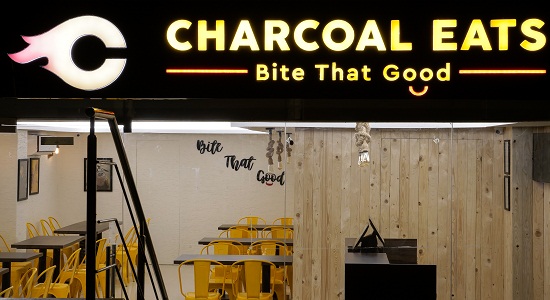
I am a Commerce Graduate from the University of Allahabad and an MBA from Asian Institute of Management, Manilla. Prior to venturing into the entrepreneurial journey, I have held senior positions in large corporates like Kotak and Edelweiss. I have been a part of the startup domain for the past six years, and I, currently, serve as a Director on the boards of Coverfox, Capzest, Woodbox & Alien Adventure.
Charcoal Biryani, as it was originally called, started with six biryanis served through multiple cloud kitchens across Mumbai. In August 2017, we pivoted to a customer facing dine-in model with our first outlet in Pune. We also moved to a franchise model for these new outlets. To support this retail push, we started expanding our menu to offer an all-day meal and snacking options, and subsequently rebranded as Charcoal Eats in March 2018. Today, Charcoal Eats offers high quality, all-day food options across snack and meal times that include Biryanis, Starters, Rolls, Loaded Fries, Curries, Puff Pizzas, Beverages and Desserts. Customers can dine-in, takeaway or order for delivery, as per their convenience.
Key Accomplishments of Charcoal Eats in 2018
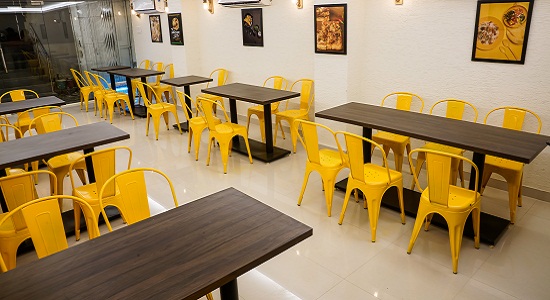
Charcoal Eats is currently present with 38 dine-in and express outlets across 12 cities - Mumbai, Navi Mumbai, Thane, Pune, Gurugram, Nashik, Chennai, Gandhinagar, Jamshedpur, Indore, Bengaluru and Jaipur. We have also set the groundwork for our international foray.
In terms of revenues, we have shown growth of almost three times from April 2018 to December 2018, with a revenue run rate of INR 17.5 mn for December 2018 v/s INR 6.0 million in April 2018. Our order numbers have shown a 350% growth from April 2018 to December 2018, with approx. 48,000 orders in December 2018, up from 13,600 orders in April 2018.
Also Read: Five Reasons Why QSR Is An Evergreen Business
This growth has been driven by two factors - our pivot from a ‘meals only’ to an ‘all-day dining’ menu and the increase in Charcoal Eats outlets across the country.
Our menu comprises a wide range of high-quality all-day dining and snacking options that offer adequate calories, at affordable prices. This delicious menu is now available to customers at their convenience – dine-in, takeaway or delivery. Customers can order delivery online through our website, mobile app or any of the leading food aggregation platforms, or they can simply call our customer care to place their delivery orders.
A key element of our growth story is the hassle-free, high ROI franchise model for people looking to start their food business. The company takes care of the food, supply chain, marketing, technology and customer care, while the franchisee focuses on managing outlet operations and local area marketing. Multiple outlet formats (dine-in, express, mini) allow us to open outlets suitable to a location’s specific requirement/ profile. All Charcoal Eats outlets are designed to be capital and resource efficient, enabling quick break-even and profitability at an outlet level.
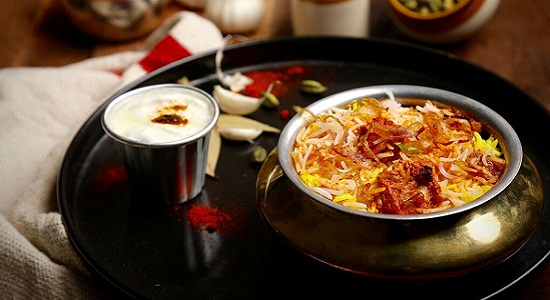
Charcoal Eats follows a hybrid distribution model, with a mix of the franchise and company-owned outlets. This mix is currently at 50:50. Our franchise partners are motivated to associate with Charcoal Eats due to our obsessive focus on quality and customer delight.
The company proactively seeks customer feedback and has made many product/service improvements over the past couple of years based on these customer insights.
We have been recognised by Radio City, a leading pan India FM radio station, for Excellence in Food Retail, 2018.
Charcoal Eats’ Expansion Plans for the Next Two Years
"We are quite bullish on our growth both in terms of volumes and revenues across all our formats and locations."
We are increasing our presence in the metros and at the same time, we have started expanding to tier II cities. We are already present in Jaipur, Jamshedpur, Gandhinagar and Indore. We foresee substantial domestic growth coming from tier II cities and have ambitious plans to establish our presence in many more such cities by FY 2020.
Innovations at Charcoal Eats in the Upcoming Years
We will continue on our mission to bring consistently delicious Indian food to people across the country. Ensuring increased levels of consistency in taste and maintaining high quality will be our focus of innovation. Effective, environment-friendly packaging will be another area of innovation focus for us. Menu innovations will take the form of new products, flavours and new category introductions.
Optimizing Menu Boards to Increase Sales
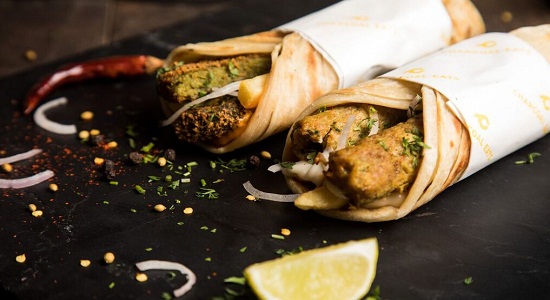
Menu boards are cost-effective to keep customers up-to-date with pricing, products and promotions. They also help in faster service as customers make quick menu decisions. We use these to display real-time changes in the product pricing and availability to the consumers.
Our automated menu boards also allow us to promote daily specials and offers that help drives sales and contribute to increased profits.
Technology Innovations in the QSR Industry in Upcoming Years
We see the following areas where technology innovations will play an important role in the QSR industry in coming years:
- Personalised food recommendations to consumers, based on their past behaviour and preferences.
- Accurate demand prediction for efficient capital and supply chain management as well as waste reduction.
- Dynamic pricing based on demand-supply patterns.
- Enhanced multi-channel customer engagement to deepen the relationship.
Must Read: Four Trends QSRs Shouldn't Ignore in 2019
Food Trends in 2019
Some key food trends in 2019 are:
- Emphasis likely to be on ethnic regional Indian cuisines.
- People are extremely health-conscious nowadays and so the focus would be on eating natural food, especially organic, non-processed and genetically modified food.
- Health and wellness will be the basis for preference for a larger number of consumers.
- QSRs will increasingly look at ways of making their food more wholesome and free of harmful additives in order to appeal to the growing number of health-conscious consumers.
- With eco-friendly and zero waste management becoming the focus of the food industry, sustainability is the core of how food will be approached.
- Alternative ingredients like goat milk or soya milk instead of cow milk will be preferred especially the ones that are at par in nutritional value.
- Innovative food packaging will replace traditional methods to meet the needs of environmentally conscious millennials.
- Snacks will be fancy and an important element of the daily routine.
- Preference for home-cooked food among the younger generation is increasing and this offers scope for food-tech companies to offer interesting meal kits for cooking a wide range of delicious wholesome meals at home.

Artificial intelligence (AI) has now been in talks for a while. According to Accenture reports, 85 per cent of organizations have already planned to adopt AI in their supply chains. Recently, United States market recently predicted that the value of artificial intelligence will grow to $36.8 billion globally by 2025.
Various other markets other than food industry have already opted for the technology. Stock markets are now dominated by technology, everyday search engines like Google use AI for improving their results the moment certain keywords are typed. Therefore making its presence felt in almost every sector. Artificial intelligence might be a new technology for food industry but there are many early adopters of the technology including mainly pharmaceutical, healthcare, cosmetics and retail industries. But things are changing for the food industry as there has been a lot of noise for it currently.
Restaurateurs are getting aware of the benefits of having AI which can eventually help them in growing business. Machines over humans have always been in the talk for a long time where everything was predicted to transform into machinery format. Artificial intelligence increases the efficiency and speed eliminating the time factor. But there are vendors who believe that this technology will bring additional revenues with better margins and lower costs in the industry.
AI relies on a continual process of technological learning from experience and improving at answering complex questions. The F&B industry is expected to modernise by adopting AI in their supply chain planning. The technology is proving everybody wrong who thought that they have done their best by utilizing yesterday’s technology solutions and optimizing the supply chain process.
Similar to the human brain, artificial intelligence adapts to the environment and improves with its regular usage. But unlike humans, the capacity for improvement is unlimited as repetitive, more and boring tasks are never a problem.
Calculating data
Having to deal with thousands of customers on a daily basis, machine learning can provide much more efficiency at calculating complex data quickly and meaningfully for the food manufacturers and retailers. Machine learning is highly effective at clustering promotions based on looking at similarities and many other variables other than using traditional techniques. For instance, a leading health food brand used the technique to analyze demand variations and shopping trends resulting in a 30 per cent reduction in lost sales. Not only will this technology know when shelves are empty, but more importantly, will predict what is going to happen next. Thus, making the shelves fully stocked along with minimizing the waste.
Reducing wastes
In food industries, many people are looking at new ways of increasing their sales which clearly states that it is still a problem in the food industry. According to the figures from WRAP, UK waste advisory body claims the industrial waste to be around ten million tons of food a year valuing over 17 billion pounds. Some food processing companies have already turned their way towards artificial intelligence as a means to better calibrate their machines in order to manage several products sizes reducing wastes and money cost by it.
Some beverage companies even tried to use AI to allow customers to change the flavors of their chosen drink. Armed with an application on their mobile phone in front of self-service machinery, it’s helping in developing new product ranges.
Artificial intelligence might just be the order of the day which will be useful to the people belonging to the food industry. The adaptation of this technique is expected to rise as the time passes by.

The vibe has to do with the culture that you create inside your restaurant which eventually ends up in attracting a lot of new customers. Enhancing the restaurant’s ambiance can help in its market sustenance in the long run. “Vibes can be created by the simplest of things. It’s all about creating a culture. It can be the feeling while you enter a specific restaurant to the staffs greeting you. Vibes are generally very essential as it helps customers to decide whether they want to continue dining out with your restaurant or not,” shares Saurav Mishra, Owner, Hilly Billy Café.
Sense of Sight
The vibe which customers get from the visual aspect of the restaurant is very important. It is well said that the people initially consume with their eyes and later with their mouth. It is important to be aware what you want your restaurant to feel like and then accordingly decide its appearance. Your vision should be resonated via the interiors of the venture.
Sense of Smell and Sound
How the restaurant smells is another key factor which drives the customer’s attention towards it. The aroma created in the kitchen which usually travels to all corners of a restaurant is a big part which contributes to creating a vibe for the venture. The vibe of a restaurant also depends upon the sound which can be found on entering. Many factors including whether a restaurant is busy and noisy or soft and quiet decides the vibe. The background music also contributes to this factor and should keep rotating the playlists.
Sense of Taste
The menu available at your restaurant works as a catalyst for its vibe. Compromising with the quality usually leads to the shutdown. Food usually works as an instigator in order to achieve all kind of vibes you want to have at your restaurant. “The taste of your food defines your future as a restaurateur. If you are good in it, then that’s amazing otherwise you really have to work on it before your venture collapses,” says Santanu Chakraborty, Director, Hing Bar and Restaurant.
Hence to attract more customers, it is highly essential to create a great vibe in every term. Work with your staffs and team in order to create the culture which you want to provide to your customers.
Copyright © 2009 - 2025 Restaurant India.






